Thanks
|
Dear Tony Without the capacity to breath - there is no conscious life. This reminds me of the pre-Christian use of the Greek term 'Psyche' which means 'breath of life' and which implies the 'autonomous movement' of mind and body. As Plotinus suggests - the breath (and the movement of mind and body) are inherently linked. This reality allows for a vast interpretation of the same basic idea(s) spread throughout the genre of Chinese martial arts. One layer superimposed over this foundational reality in the White Crane Fist System is that of the production of 'vibration' and 'shaking' - which appears to represent a scale (or polarity) between physical movements that are 'hard', 'soft' and 'neutral' - a layer of activity happening 'over' the breathing mechanism, so-to-speak. Or, so it would seem.
Thanks
0 Comments
Xiao Yujun (小鱼君) I came to a mysterious place – it has three lanes and seven allies... All will be filled by a ‘Martial Self-Cultivation General Assembly’ full of mystery and ritual... Later – there will be an unveiling involving an apprenticeship ceremony! The spiritual essence of the martial arts will be slowly revealed and exhibited... This is when the spirit and the physicality of the White Crane will take to the air yet again! Lin Yingshu (林应术) The Form is pure, the mind is ‘still’ the body is fully prepared (relaxed and tenses in equal measure). The whoop cries out across Jiugao – such ather old. It was developed by a woman known as ‘Fang Niqiang’ (方七娘) or ‘Fang Seventh Female’ - she was the only daughter (and the seventh born) out of the seven children produced by her father – Fang Zhong (方种)! Fang Niqiang lived during the Kangxi (康熙) period of the Qing Dynasty (1662-1722 CE) and was taught in the Funing (福宁) area of Fujian by a Shaolin Master outside the North Gate (北门 - Bei Men). Although Fang Zhong possessed at least six sons – it was this woman who possessed the correct character and virtue to be a disciple of this renowned local Shaolin Master! is the power of the Red-Crowned (Manchurian0 Crane! The long beak acquires food without moving or disturbing the surface of the calm water... Yet with great penetrative power the beak of the crane can meet any unexpected guest... The red eyes can detect movement far away – and not lose track of any approach! The slender legs tread through water but are never overcome – always ready to step and evade! The wings gracefully unfold to shield, block and parry – whilst lifting the crane in flight! The neck is slim and yet vast – it can swallow the world – and regurgitate the content! Those who master these mysterious attributes of this tradition attain to immortality! (This poem is in memory of the late ‘Whooping Crane Fist’ Master - Chen Shiding [陈世鼎]) Mr. Huang Teng (黄腾) - Vice President of Fuzhou Wushu Association During the Daoguang (道光) era of the Qing Dynasty (1820–1850 CE) - Zheng Li was exiled in the Fuzhou area with his disciples. One of his disciples was named ‘Lin Shixian’ (林世咸) and it is this man (known as being from the Quanzhou area) who is considered the Founding Patriarch of the ‘Whooping Crane Fist’ (鸣鹤拳 - Ming He Quan) martial system. One day, Lin Shixian visited the Buddhist ‘High Convent’ (高庵 - Gao An) Temple (堂 - Tang) situated in the Yixu area of Fuzhou. Here, he encountered a Shaolin monk who was an expert in the ‘Shaolin Arahant Fist’ (少林罗汉拳 - Shao Lin Luo Han Quan) system. They agreed to participate in a friendly sparring match whereby Lin Shixian impressed and mesmerised the crowd with the beauty and majesty of his ‘White Crane Fist’ ability! Although considered a draw – both men became very good friends and shared their respective knowledge with one another! The esteemed Shaolin monk had a disciple named ‘Lin Dachong’ (林达崇) - who was also called ‘Pan Yu Ba’ (盘屿八) - who witnessed this sparring match and who was transfixed by the ‘White Crane Fist’ that he saw, and he decided to follow Lin Shixian back to his home in Quanzhou. Lin Dachong believed that the ‘White Crane Fist’ was truly magical and mysterious! Lin Dachong knelt down with respect in front of Lin Shixian and begged to be accepted as his disciple! He also made the request that Lin Shixian stay and teach him in the Pan Yu area of Fuzhou! Although Lin Shixian was a very strict and serious individual – he agreed to accept Lin Dachong as a disciple AND to stay and teach him in Pan Yu! This is why Pan Yu has become the birthplace of the ‘Whooping Crane Fist’ both in China and abroad! When Lin Dachong became a great teacher in his own right, he took on a disciple named ‘Xie Chongxiang’ (谢崇祥) to whom he taught the true essence of his martial arts style! Xie Chongxiang was a shoemaker in the Daibian (岱边) Village of the Guhuai (古槐) Township located in the Changle County area of Fuzhou! Xie Chongxiang was known locally as ‘Xie Ru Ru’ (谢如如) and by his martial arts students as ‘Ru Shi’ (如师). Xie Ru Ru became very famous and attracted hundreds of students and disciples. One such disciple was from the Chinese region of Ryukyu (which was invaded and occupied by Japan in 1879 and which is now known as ‘Okinawa’). This man was called ‘Higaonna Kanryo’ (东恩纳宽量 - Dong En Na Kuan Liang) [1853-1915] and he was the expert of the ‘Naha Hand' (那霸手 - Na Ba Shou) fighting system from the Ryukyu. He was a Master of ancient martial techniques involving the old weaponry of his island nation (古武道 Gu Wu Dao) - known in Japan as ‘Kobudo’. He was from a village in the Western area of Naha city. He arrived in our area of Fuzhou in 1877 and had specifically made the journey (across the sea) to pay his respects to ‘Ru Shi’. Xie Ru Ru accepted him as a disciple and taught him intensely for three full years before Higaonna Kanryo returned to Ryukyu where he started teaching ‘China Hand’ (唐手 - Tang Shou). This is how ‘Whooping Crane Fist’ was introduced into Okinawa and Japan – and explains how later it evolved into modern ‘Karate-Do’ (now termed ‘Empty Hand Way’). Although typical of a Chinese folk martial art found in the Fuzhou area - ‘Whooping Crane Fist’ has now developed into the Goju Ryu style of Karate-Do – which is now very popular in Japan and throughout the world! Old Mr Yu (余) has told us about these facts. He is qualified in science and engineering (working in the car industry in his youth) and believes that martial arts should be studied through scientific facts. He has viewed important historical documents and has checked these facts with many other learned individuals. He explained that when young he held the prejudiced and bias views of the traditional mind-set – but after receiving an advanced education and learning about the scientific method – he understood that an objective fact must be established through multiple points of references and not through one dominant and yet limited point of view! This is why he abandoned his sectarian views and started listening to others and holding debates with many different types of people! This is how he improved his personal knowledge and strengthened his understanding of the theory and practicing of Fuzhou martial arts! Old Mr Yu believes that martial arts should be a kind of learning through communication. For modern people, such a profound learning experience is very important! Chinese martial arts must pay attention to progressive change. It is not enough to learn a single movement, and the profound essence of a movement cannot be learned overnight. Therefore, students come to visit and study every year! Only when you have a profound interest will you understand the breadth and depth of genuine martial arts (武术 - Wu Shu). Therefore, many foreign friends come to Fuzhou to learn genuine Chinese martial arts - including ‘Earthquake Fist’ (地术拳 - De Shu Quan), ‘Crane Fist’ (鹤拳 - He Quan) and ‘Arahant Fist’ (罗汉拳 - Luo Han Quan), etc, as well as many other martial style, systems and schools! Due to this diversification, extensive circles of world-wide communication have developed between Chinese people and people from all over the world! This is how the Fuzhou martial culture has developed modern China and brought a profound meaning to the lives of countless individuals from all around the world! This is how many different people use an element of ancient China martial culture in a manner which links many different people together! The attitude today is that Chinese martial culture now belongs not only to the Chinese people – but also to the many different people of the world! We must all study and learn together with an attitude of mutual respect! With regards to modern, Japanese Karate-Do – please come to Fuzhou and we will show you where your ‘Chinese’ martial art originates! We now preserve our traditional Chinese martial arts – but we now share these martial arts with everybody around the world who wants to learn! 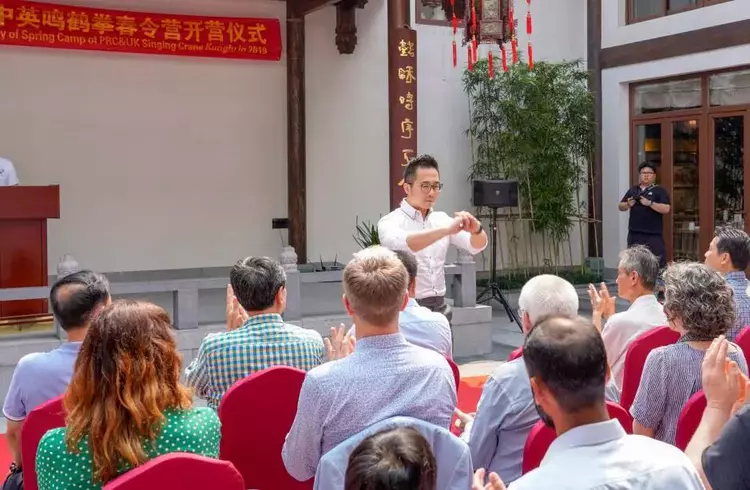 Mr. Huang Teng (黄腾) - Vice President of Fuzhou Wushu Association Mr. Huang Teng (黄腾) - Vice President of Fuzhou Wushu Association Origin of ‘Whooping Crane Fist’ (鸣鹤拳 - Ming He Quan) Xiao Yujun (小鱼君) - can you give a basic description and outline of the ‘Whooping Crane Fist’ style’ How old is it and what is its history? According to legend, ‘Whooping Crane Fist’ developed from the ‘Yongchun’ (咏春) variant of Fujian ‘White Crane Fist’ (白鹤拳 - Bai He Quan). Due to various outside influences and experiences, the ‘Whooping Crane Fist’ style gradually evolved out of the Fujian ‘White Crane Fist’ style and took its place as a legitimate Fuzhou self-defence and self-cultivation system! Regarding history, the length of existence for Fujian ‘White Crane Fist’ is really quite long. There have been at least four great generations of Yongchun name clans who have significantly developed, preserved and passed on the ‘essence’ (精 - Jing) of the ‘White Crane Fist’ style! This style was passed on by the great Qing Dynasty martial artist known as ‘Zheng Li’ (郑礼), but has also been preserved as family traditions within the Lin (林), Chen (陳), Cai (蔡), Qiu (邱), Wu (吴), Xu (许), Kang (康), Zhou (周), Yan (颜), Zhang (张) and Li (李) clans amongst now many others in China and around the world. This exceptional group is referred to (and known) as the Twenty-Eight ‘Heroic Geniuses’ (英俊 - Ying Jun) - as every single individual became famous! During the Daoguang (道光) era of the Qing Dynasty (1820–1850 CE) - Zheng Li was exiled in the Fuzhou area with his disciples. One of his disciples was named ‘Lin Shixian’ (林世咸) and it is this man (known as being from the Quanzhou area) who is considered the Founding Patriarch of the ‘Whooping Crane Fist’ (鸣鹤拳 - Ming He Quan) martial system. One day, Lin Shixian visited the Buddhist ‘High Convent’ (高庵 - Gao An) Temple (堂 - Tang) situated in the Yixu area of Fuzhou. Here, he encountered a Shaolin monk who was an expert in the ‘Shaolin Arahant Fist’ (少林罗汉拳 - Shao Lin Luo Han Quan) system. They agreed to participate in a friendly sparring match whereby Lin Shixian impressed and mesmerised the crowd with the beauty and majesty of his ‘White Crane Fist’ ability! Although considered a draw – both men became very good friends and shared their respective knowledge with one another! The esteemed Shaolin monk had a disciple named ‘Lin Dachong’ (林达崇) - who was also called ‘Pan Yu Ba’ (盘屿八) - who witnessed this sparring match and who was transfixed by the ‘White Crane Fist’ that he saw, and he decided to follow Lin Shixian back to his home in Quanzhou. Lin Dachong believed that the ‘White Crane Fist’ was truly magical and mysterious! Lin Dachong knelt down with respect in front of Lin Shixian and begged to be accepted as his disciple! He also made the request that Lin Shixian stay and teach him in the Pan Yu area of Fuzhou! Although Lin Shixian was a very strict and serious individual – he agreed to accept Lin Dachong as a disciple AND to stay and teach him in Pan Yu! This is why Pan Yu has become the birthplace of the ‘Whooping Crane Fist’ both in China and abroad! When Lin Dachong became a great teacher in his own right, he took on a disciple named ‘Xie Chongxiang’ (谢崇祥) to whom he taught the true essence of his martial arts style! Xie Chongxiang was a shoemaker in the Daibian (岱边) Village of the Guhuai (古槐) Township located in the Changle County area of Fuzhou! Xie Chongxiang was known locally as ‘Xie Ru Ru’ (谢如如) and by his martial arts students as ‘Ru Shi’ (如师). Xie Ru Ru became very famous and attracted hundreds of students and disciples. One such disciple was from the Chinese region of Ryukyu (which was invaded and occupied by Japan in 1879 and which is now known as ‘Okinawa’). This man was called ‘Higaonna Kanryo’ (东恩纳宽量 - Dong En Na Kuan Liang) [1853-1915] and he was the expert of the ‘Naha Hand' (那霸手 - Na Ba Shou) fighting system from the Ryukyu. He was a Master of ancient martial techniques involving the old weaponry of his island nation (古武道 Gu Wu Dao) - known in Japan as ‘Kobudo’. He was from a village in the Western area of Naha city. He arrived in our area of Fuzhou in 1877 and had specifically made the journey (across the sea) to pay his respects to ‘Ru Shi’. Xie Ru Ru accepted him as a disciple and taught him intensely for three full years before Higaonna Kanryo returned to Ryukyu where he started teaching ‘China Hand’ (唐手 - Tang Shou). This is how ‘Whooping Crane Fist’ was introduced into Okinawa and Japan – and explains how later it evolved into modern ‘Karate-Do’ (now termed ‘Empty Hand Way’). Although typical of a Chinese folk martial art found in the Fuzhou area - ‘Whooping Crane Fist’ has now developed into the Goju Ryu style of Karate-Do – which is now very popular in Japan and throughout the world! Old Mr Yu (余) has told us about these facts. He is qualified in science and engineering (working in the car industry in his youth) and believes that martial arts should be studied through scientific facts. He has viewed important historical documents and has checked these facts with many other learned individuals. He explained that when young he held the prejudiced and bias views of the traditional mind-set – but after receiving an advanced education and learning about the scientific method – he understood that an objective fact must be established through multiple points of references and not through one dominant and yet limited point of view! This is why he abandoned his sectarian views and started listening to others and holding debates with many different types of people! This is how he improved his personal knowledge and strengthened his understanding of the theory and practicing of Fuzhou martial arts! Old Mr Yu believes that martial arts should be a kind of learning through communication. For modern people, such a profound learning experience is very important! Chinese martial arts must pay attention to progressive change. It is not enough to learn a single movement, and the profound essence of a movement cannot be learned overnight. Therefore, students come to visit and study every year! Only when you have a profound interest will you understand the breadth and depth of genuine martial arts (武术 - Wu Shu). Therefore, many foreign friends come to Fuzhou to learn genuine Chinese martial arts - including ‘Earthquake Fist’ (地术拳 - De Shu Quan), ‘Crane Fist’ (鸣鹤拳 - Ming He Quan) and ‘Arahant Fist’ (罗汉拳 - Luo Han Quan), etc, as well as many other martial style, systems and schools! Due to this diversification, extensive circles of world-wide communication have developed between Chinese people and people from all over the world! This is how the Fuzhou martial culture has developed modern China and brought a profound meaning to the lives of countless individuals from all around the world! This is how many different people use an element of ancient China martial culture in a manner which links many different people together! The attitude today is that Chinese martial culture now belongs not only to the Chinese people – but also to the many different people of the world! We must all study and learn together with an attitude of mutual respect! With regards to modern, Japanese Karate-Do – please come to Fuzhou and we will show you where your ‘Chinese’ martial art originates! We now preserve our traditional Chinese martial arts – but we now share these martial arts with everybody around the world who wants to learn! Yu Danqiu (余丹秋) and the Origin of ‘Whooping Crane Fist’ (鸣鹤拳 - Ming He Quan) Mr Xie Chongxiang (谢崇祥) passed on his art to Xiao Shuide (萧铄德). Mr Xiao Shuide (萧铄德) passed on his art to Mr Yu Baoyan (余宝炎). Remember – Mr Xiao Shuide (萧铄德) learned directly from Xie Chongxiang! Mr Yu Baoyan (余宝炎) passed on his art to his son Mr Yu Danqiu (余丹秋). Therefore, Mr Yu is proficient in martial arts, medicine, Classical literature, morality, virtue, righteousness and duty, etc. He is a world-renowned expert in Fuzhou martial arts and is known to be a great scholar. Due to his expertise and knowledge, he is invited to teach and lecture in Singapore and Japan (and other countries) in a continuous manner! This is the building of many friendly cultural bridges between China and many other countries using traditional Chinese martial arts as a springboard! His son, Mr Yu Danqiu, has been entrusted with the production of the true history of his family’s martial arts! Furthermore, His educated and cultural views on the history and culture of Chinese martial arts are also unique. This is a conversation between Xiao Yujun and Mr Yu Danqiu: How Did We Bond with Mr George? Mr Yu mentioned that he met and taught Mr George - from the UK – who had originally visited Japan to study karate for three years. After his Japanese teacher explained about the Chinese origins of karate, Mr George started to visit Fuzhou on a regular basis seeking genuine knowledge about the ‘Whooping Crane Fist’ style! He was eventually introduced to Mr Yu – and his search for genuine knowledge paid dividends! This is when Mr George naturally started to practice ‘Whooping Crane Fist’! After studying hard and diligently in Fuzhou under the watchful eye of Mr Yu – Mr George mastered the foundational teachings and was able to return to the UK and pass on his experience to White Crane enthusiasts in the UK! He then brought these students to Fuzhou to meet Mr Yu and train with him personally! This interaction is an excellent model for spreading Chinese martial arts abroad, and for foreign students to benefit from the openness of modern Chinese martial culture! Mr Yu said that he looks forward to the day that Chinese martial arts become ‘normal’ and represented at the Olympic Games! The point of this interaction is that we can help and assist one together and achieve all our objectives together! Mr Yu, although modern in many ways, still does not like teaching people just because they possess large amounts of money! This situation does not show the true character of an individual and students and disciples should be carefully chosen to avoid future problems! Genuine martial arts are like a jewelled sword which is handed to a hero whose character is pure and who can be entrusted to perform his or her duty with a pure mind and clean body! This is why Mr Yu does not teach everyone directly. A ‘Whooping Crane’ is meek, modest and retiring – it never initiates an attack and always defends itself by attacking the opponent from behind! Therefore, morality and true intention are very important! If genuine gongfu is passed on to people with bad morals or lack of understanding - it will have a negative impact on the heritage of the entire fighting tradition! Modernity is important, but the good aspects of tradition must still be preserved – this is particularly true where many martial arts have been reduced to mere commodities for making money – this is no good for the psychological and physical health of the individual and is no good for society at large! Mr Yu states continuously that traditional Chinese martial arts are very difficult to learn and perfect! That is the point of their purpose! The foundation of any genuine martial art from Fuzhou is tough and difficult and involves much body and mind strengthening that many young or shallow-minded people cannot stand to learn or bear to suffer! Can you hold a deep Horse Stance for one hour? Even if you can take the purifying pain – can you bear the boredom of repeating the same basic techniques over and over again? Mr George Listened Patiently to All This and Replied: Master Yu's ‘foreign apprentice - Mr. George - explained us that about ten years ago, when he was studying karate in the UK, Mr George himself wanted to know more about the origin of his martial arts. His teacher advised him to go to Okinawa, Japan and investigate... He did not hesitate to go to Okinawa, in Japan to better learn the skills of Goju Ryu karate - and the hard work made him addicted! When he heard from his teacher of Goju Ryu that his martial technique derived from the Fuzhou style of ‘Whooping Crane Fist’, he immediately told his teacher that he wanted to go to Fuzhou. Since that time, he has now been practicing ‘Whooping Crane Fist’ under the guidance of Master Yu for a long time now! The beginning was not easy, however, as he had to communicate for quite some time before Master Yu agreed to accept him as a disciple! Eventually, after an in-depth study and discussion, both agreed that there should be an official public ceremony confirming this appointment! As Master Yu was willing to accept Mr George as a disciple, this made him very happy – explained Mr George during our conversation. Mr George also told us: "In traditional martial arts, apprenticeship is about fate, and the traditional apprenticeship is often too solemn - and the atmosphere is too dignified. My Master thinks this might be too excessive in the modern age, and I tend to agree. We can keep the respect and the profound sense of duty – but we can also modernise the ritual to make such an undertaking relevant for a contemporary person! We made the ceremony less strict but just as meaningful. We have used a longer time period and focused on training rather than ritual! Indeed, we chose a ten-month time period for preparation! https://c.m.163.com/news/a/ECQH021D0525I8S7.html?referFrom=
藏在繁街市井的武林风云——鹤唳长鸣 拳纵武林 福州小鱼网 2019-04-15 14:58 武林·风貌 -- 小鱼君,来到了...三坊七巷一处神秘的... -- 将有一场充满“武林大会”神秘的仪式... -- 稍后这场神秘的拜师仪式即将揭开神秘面纱 -- 神秘的武林慢慢地...拉开了序幕...... 白鹤双飞 林应术 形清神静体尚洁 声鸣九皋丹顶鹤 食不离水喙尖长 喜集劲松迎宾客 赤睛露睛则视远 轻前重后以善舞 高脚洪髀常独立 毛丰肉疏爱双飞 脩颈大喉宜吐纳 寿不可量羽宗师 (本诗为缅怀已故鸣鹤拳大师—陈世鼎) 鸣鹤拳的源来 小鱼君先给大家科普一下,鸣鹤拳为什么叫做鸣鹤拳?它的历史究竟有多悠久... 鸣鹤拳相传由福建咏春白鹤拳衍化发展产生,逐步形成福州鹤系中的鸣鹤拳。 柠檬|摄 这段历史颇为悠长,要从清朝康熙年间(公元1662~1722年)的福建福宁北门外少林拳师方种的独生女儿方七娘,这里讲起;七娘自幼承家学武术,练就一身武艺,因父武败亡,心丧成伤之际偶见一白鹤昂首振羽,舞脚弄翼等奇妙姿态,日夜揣摩衍化,揉合于少林拳术,创出别具一格的白鹤拳。咏春人曾四得其精传,逐步发展完善,并传郑礼、林、蔡、邱、吴、许、康、周、颜、张、李等世称二十八英俊,皆为一代名宿。 图为福州武术协会副会长 黄腾先生 柠檬|摄 清道光年间,郑礼谪传弟子、福州鸣鹤拳世祖林世咸(俗称泉州仔),游玩福州义序高庵堂,以白鹤神技折服本寺少林罗汉拳高僧,并成挚友。高僧之徒盘屿林达崇(俗称盘屿八)目睹两人较技全过程,对白鹤拳神技惊讶不已,在奉送林世咸回泉州途中跪地恳留到盘屿赐教,林世咸传武林达崇,由此盘屿成为福州鸣鹤拳的发源地而闻名海内外。林达崇传福州长乐古槐乡岱边村鞋匠谢崇祥(谢如如,俗称如师)。谢师的门徒弟子众多,其中琉球国(现为日本冲绳县)那霸“手中兴”(古武道)鼻祖东恩纳宽量(1853年——1915年)最为著名,其为那霸西边村人,自1877年渡海来榕拜谢崇祥(如师)为师,三年后学成回国,开设唐手武道,至此,中国民间武术——福州鸣鹤一脉传入琉球,时至今日演变成为日本刚柔流空手道,而刚柔流在日本颇具盛名。 图片|来源于网络 余丹秋与鸣鹤拳的渊源 谢崇祥先生传艺于萧铄德,而余宝炎先生拜萧为师学习拳术,萧又将其引荐于谢师,受谢师的亲自指点(谢师即谢崇祥)。而余丹秋老先生师承其父亲于余宝炎老先生,余老先生精通武、医、学,品德武德高尚,武艺超群,曾多次应邀出访新加波、日本等国,为中华武术走向世界而架桥铺路;其子余丹秋老先生则授得其武学真传,对于武术的见解也独具一格。 小鱼君与余丹秋老先生的一段交谈: 余老这样告诉我们:他年轻时曾是一名汽车工程师,所以在武术理论方面极为重视科学实践。他抛弃门派之见,博采众长,不断完善本门拳法理论。余老先生认为,武术应该是一种交流学习,对于现代人而言,学习者体验很重要。中国武术讲究变化,不是单一学习动作就可以的,不是一朝一夕就能学完的,所以每年都有学生来拜访学习。有了兴趣才会了解武术的博大精深,有许多外国友人因此来到福州学习武术,包括地术拳、鹤拳、罗汉拳等门下都有许多外国弟子。他们也有各自的交流圈,其中有兴趣的人也会跟随学习。这也是让中国武术走出国门,让不同的拳种走出国门,让更多国家的外国友人了解中国武术的渊源流传,与空手道有着如何的渊源。作为武术技艺传承人要做的事就是让世界更多的了解我们中国的传统武术。 谈起如何与乔治先生结缘? 余老先生谈起,来自英国的乔治先生从英国到访日本学习了三年空手道, 经过日本老师的讲述空手道的起源后,乔治先生曾先后多次来访福州探访关于鸣鹤拳的消息,最终多次打听才找到余老,在这里学习鸣鹤拳技艺。乔治先生平时刻苦努力地学习的同时也将自身技艺传授给英国本土的武学爱好者,让有兴趣的学生来到榕城学习鸣鹤拳。以此也可以扩大对中国武术的宣传,余老也说道我们的目标是将中国武术纳入奥运会的项目,前提是我们自己要做好。这需要我们作为习武之人的共同努力。 图为乔治先生上台发言 柠檬|摄 余老说到武术传承,余老先生认为,武术就像一把宝刀,宝刀赠英雄,是不能谈钱的,因此,他在择徒方面非常谨慎,这样有利于拳术的传承。鸣鹤拳本身讲究后发制人,并非霸道的拳术,注重以德为先。如果把真正的功夫传给品德不好或悟性不足的人,会对拳术传承造成不良影响。针对目前传统武术流失情况严重这一现象,余会长说,传统武术训练较为刻苦,而且强调基本功的训练,一般的人受不了这份苦,也不能忍受基本功训练的枯燥,所以导致传统武术后继乏人。 来自英国的乔治先生告诉我们: 余师傅的“洋”徒弟—乔治先生告诉我们:大约十年前,他在英国学习空手道时,乔治先生自己想要更深入了解他的武术渊源,他的师傅告诉他说道:你可以去日本冲绳看看... “我毫不犹豫去到日本冲绳学习刚柔流空手道技艺,刻苦的学习让我沉迷。我从师父那听闻刚柔流是源自福州鸣鹤拳一脉的技艺的时候,我就和我的师傅说我想要来福州。跟随余师傅学习鸣鹤拳很长时间了,经过一段时间的互相之间交流,余老师也默许了我这个徒弟,最后我们一同选在今日这个时间进行正式的拜师行礼,余师傅也愿意收下我做为弟子,这让我感到十分的高兴。”交谈中乔治先生这样说到。 图为乔治先生(图左)与郑廷仁先生(图右) 柠檬|摄 乔治先生还告诉我们:“武术,拜师讲究缘分,按照传统的拜师又显太庄重,气氛太凝重,我的师傅不喜欢这样,我也不喜欢。为了让这场拜师不显得太随意,得正式一些,又不会显得过于庄重。这场拜师仪式整整筹划了十个月的时间”。 图为 余丹秋老师(图左)和林善泉老师(图右) 柠檬|摄 -- 小鱼君也很为乔治先生感到高兴 -- 乔治先生终于如愿以偿成为了余老先生的弟子 -- 鸣鹤拳门下又多了一股新生力量 -- 看到这,是不是觉得“武林”背后的故事 -- 很吸引你呢? -- 别着急 -- 小鱼君还会带你 -- 看到更多不一样的“武林” -- 敬请期待吧~ 特别声明:本文为网易自媒体平台“网易号”作者上传并发布,仅代表该作者观点。网易仅提供信息发布平台。 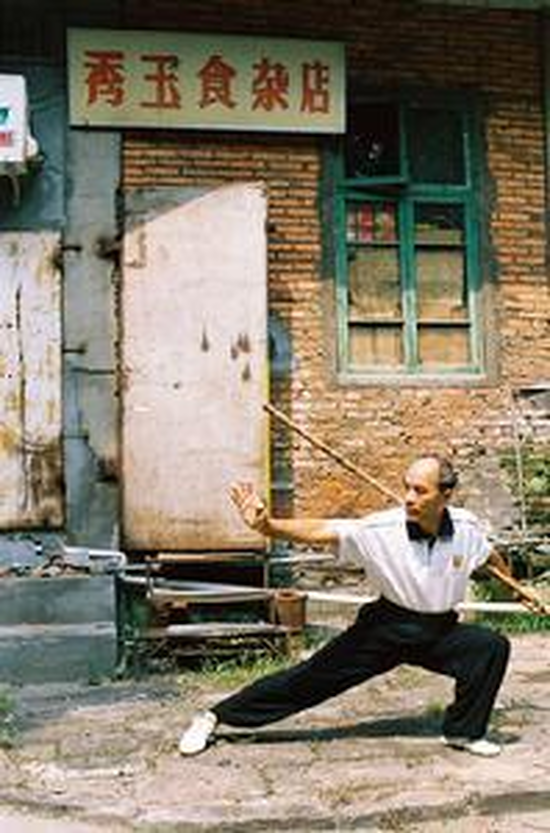 Breath, Bodyweight and Awareness 'Sink' Down Through the Lower Dantian (丹田) and Down Each Leg and Through the Feet into the Ground! The Immense Rebound Force Emits Upwards Through a 'Trembling' Reaction Which Gathers the qi Power into the Desired Area for Offense or Defence! Lin (林) Family Member Practices Outside Their Shop in Fuzhou! Root Ancestor (始祖 - Shi Zu) - Martial Teachings Later Evolved into Okinawan Goju Ryu Karate-Do. The extant Chinese language records state that Xie Chongxiang (谢崇祥) was also known as 'Xie Ru Ru' (谢如如) - and often referred to by his disciples and students as 'Ru Shi' (如师). He was trained in traditional Chinese martial arts by his teacher ‘Lin Dachong’ (林达崇) who was commonly referred to as 'Pan Yu Ba' (盘屿八). Xie Chongxiang was taught (and/or further developed) the following martial arts styles: a) 'Whooping Crane Fist' (鸣鹤拳 - Ming He Quan). b) 'Shaolin Arahant Fist' (少林罗汉拳 - Shao Lin Luo Han Quan). c) 'Shaolin White Crane Fist' (少林白鹤拳 - Shao Lin Bai He Quan). The third example is also often referred to as 'Fujian' (福建) White Crane Fist - whilst the ambiguous language used in his biography suggests that 'Whooping Crane Fist' (鸣鹤拳 - Ming He Quan) is an 'integration' of (and/or an 'improvement' upon) the 'Arahant Fist' (罗汉拳 - Luo Han Quan) style and the 'Shaolin' (or 'Fujian') White Crane Fist' (少林白鹤拳 - Shao Lin Bai He Quan) style (also referred to as 'Yongchun' [永春] White Crane Fist). (The use of the term 'Shaolin' here, refers to the idea that there once existed a number of 'Southern' (南 - Nan) Shaolin sister temples (to the famous 'Henan' Shaolin Temple) which existed in Quanzhou, Putian and Fuqing areas of Fujian province, etc, with each perfecting their own unique and distinct martial arts traditions that were spread out into the lay communities when these temples were destroyed for political reasons). This 'integrating' process appears to have been carried-out by Lin Dachong and Xie Chongxiang during their respective lifetimes. It seems that Lin Dachong built the foundation of 'Whooping Crane Fist' - whilst Xie Chongxiang further developed and completed this transformative process - eventually perfecting the 'Whooping Crane Fist' style! Xie Chongxiang is represented in a typical Confucian style of being a loyal and devout inheritor and preserver of the past - whilst also 'adding' to this wealth of ancient knowledge through his own ingenious innovations manifest through hard work and practical demonstration. He was known generally as ‘Xie Ru Ru’ (Esteemed Elder Brother Xie) even though his two first birth-names were ‘Chong’ and ‘Xiang’. At the age of 13 years old, he relocated (with his father) to the Taijiang coastal area of Northeast Fuzhou, where they lived next to Xing’an (星安) Bridge. His father was called ‘Xie Zunshi’ (谢尊志) and he was renowned as an expert in the fine craft of bamboo weaving and bamboo construction. This is how his father made a living in the Taijiang area. Xie Ru Ru first followed his father – learning the rudiments of the bamboo weaving and construction craft, but when he grew older, he was apprenticed back at his hometown under ‘Lin Kangguan’ (林康官) at the newly opened ‘Treasure Beautiful Fast’ (宝美斋 - Bao Mei Zhai) Shoe Shop! Xie Ru Ru was well-known for working very hard! He would labour all day learning his trade, whilst in the evening and at night he would learn martial arts (拳术 - Quan Shu) from a friend of his father – who came from the ‘Pan Yu’ (盘屿) area of Fuzhou. He was short in stature (about 1.55 meters) but was very stout and muscular in build! Records state that his right-arm was noticeably longer than his left-arm. As he worked so hard (carrying-out various and continuous types of manual labour), his body became very strong, and his mind became very calm (and focused). He was patient and long-suffering. He could endure physical hardship and did not allow the pain he experienced to disrupt his calm state of mind. Due to the development of his mind and body, and the difference in the length of his arms, Xie Ru Ru developed an open-hand (手 - Shou) martial arts style that emphasised (and distinguished) the ‘hard’ (刚 - Gang) and ‘soft’ (柔 - Rou) in its attacking and defending techniques – the two concepts of which were integrated through the developed perception of the mind of the practitioner! His longer (right-arm) was trained to pierce and penetrate the defence of the opponent with ‘hard’ techniques whilst the shorter (left-arm) acted as a highly effective ‘soft’ vehicle for deflecting, diverting and evading any of the opponent’s attacking techniques which threatened to strike the head, torso or lower body, etc. This led to a style whereby Xie Ru Ru fought with his longer right-arm forward – as this gave him the greater ‘attacking’ advantage in combat! When asked what ‘animal’ style this system represented, Xie Ru Ru explained that he had been taught ‘Crane’ (鹤 - He) style by other Masters – but that he had been observing how the White Crane species of bird behaved throughout the day, throughout the season, throughout the year and throughout its life! The White Crane often feigned ‘weakness’ or ‘over-exaggerated' a deficiency it already possessed! This would create an unfounded arrogance in the opponent and served to hide the strengths that the White Crane actually possessed! An over-confident opponent would unknowingly expose their natural weakness when they thought no threat was present! As Xie Ru Ru had strengthened his mind and body, he possessed an immense power which he applied at exactly the right moment in combat – just as the White Crane expertly pecked with its beak, kicked with its feet or deflected with its wings! The White Crane also stepped aside and made itself ‘non-present’ with a perfect timing – a skill that Xie Ru Ru also perfected exactly. This is why he referred to his style of fighting as ‘Crane Fist’ (鹤拳 - He Quan). The fighting style of Xie Ru Ru was eventually transmitted to Okinawa (which used to be a part of China and known as ‘Ryukyu’) where it was developed into what is today known as the ‘Goju Ryu’ style of Karate-Do. This is the ‘Hard-Soft’ School of fighting which has a Chinese origin premised upon the White Crane Fist fighting system. This association was confirmed in 1989 by some of the best leading scholars Mainland China possesses – and in the intervening years has stood the test of time and has resisted every challenge that has been made against it. It is very clear that Xie Ru Ru was the teacher of Higaonna Kanryo – recorded in Okinawa as ‘Ru Ru Ko’ - and it is very clear from Okinawan records (held within the Miyagi family) that Higaonna Kanryo held the martial abilities of Xie Ru Ru with the highest level of respect! Xie Ru Ru was born during the second year of the ‘Xianfeng’ (咸丰) era of the Qing Dynasty (1852), with his ancestral village located in the 'Daibian' (岱边) area of Changle (长乐) County Northeast Fujian province – situated about 20 miles East of Fuzhou. His family was typical of the day and was very poor. At the age of 13 years old, he went to Fuzhou, the provincial capital, with his father Xie Zunzhi. They lived in the Shuanghang (双杭) area near to the Xing'an Bridge. He first learned to be a fine bamboo craftsman, and later he became an apprentice in the Baomeizhai shoe shop opened by his fellow countryman Lin Kangguan. He worked hard during the day (strengthening his mind and body) and he then learned ‘Arahant Fist’ (罗汉拳 - Luo Han Quan) from a friend of his father named ‘Lin Dachong’ (林达崇) during the evening and at night! As he was short and stocky, and because his right-arm was longer than his left-arm, Xie Ru Ru developed a martial style that perfectly blended the ‘hard’ with the ‘soft’ (equating these two concepts with the perfect interaction of yin and yang 陰陽). The ‘hard’ represented the ‘external’ (外 - Wai) whilst the ‘soft’ represented the ‘internal’ (內 - Nei) - with the mind and perception of the practitioner distinguishing and integrating these two important and profound concepts. Although possessing a disability regarding the disproportional length of his arms, Xie Ru Ru was highly intelligent and used his circumstances to the best of his ability! Just like a White Crane (which appears weak and fragile), Xie Ru Ru used his natural attributes to a great advantage over his opponents! This in itself constitutes a great and profound achievement and demonstrates the triumph of the human spirit over the limitations presented by material reality. Xie Ru Ru was highly intelligent, and he used his advanced thinking ability to transcend the physical limitations that life had presented him with! The physical structure, behaviour and reactions of the Fujian White Crane offered Xie Ru Ru a vehicle to achieve this mind and body transformation! The material reality defining Xie Ru Ru’s body and living conditions provided him with a challenge which allowed him to develop the ‘Arahant Fist’ system he had learned from Lin Dachong (also known as ‘Pan Yu Ba’) - and to explore and further develop the White Crane system that Lin Dachong is recorded as experimenting with! The rapid application and interchange of ‘hard’ and ‘soft’ techniques formed the basis of Xie Ru Ru’s martial expertise. The record books state that Lin Dachong began the developmet of ‘Whooping Crane Fist’ (鸣鹤拳 - Ming He Quan) and the Xie Ru Ru continued this development and perfected the theoretical principles and practical applications of this style. Although training to toughen the mind and body – Xie Ru Ru perfected the application of overcoming an opponent through the exclusive use of ‘soft’ open-hand techniques. This ability prevailed in the midst of the most violent martial encounters! Xie Ru Ru would remain calm and indifferent to an opponent who was acting from greed, hatred and delusion! No matter how big, strong or violent an opponent was, Xie Ru Ru would expertly evade, deflect and ‘pierce’ the defence of these aggressors with a measured ease! Indeed, he became very famous and was renowned for his martial skills far and wide – certainly beyond the geographical limitations of Fuzhou! Xie Ru Ru mastered the ability of gathering and transporting (运 - Yun) the ‘Vital Force’ (气 - Qi) contained within the breath, bodyweight and will-power (intention) - so that it could be dramatically and radically expressed – copying the White Crane when it emits its ‘cry’ (鸣 - Ming) with a sudden and overwhelming power – which Xie Ru Ru expressed in a kick, punch, block, deflection or other type of strike! Although perfecting a ‘relaxed’ body, Xie Ru Ru could suddenly gather all the ‘qi’ energy into a certain bodily area and express this as a temporary but extreme form of muscular ‘tension’ - termed ‘Iron Vest’ (铁布杉 - Tie Bu Shan) - within Chinese martial arts! Xie Ru Ru could also ‘tense’ his entire musculature for extended lengths of time – an unusual ability even amongst those who had perfected the Iron Vest technique! When all these martial abilities Xie Ru Ru possessed were gathered together, they were said to be expressed perfectly through the ‘Whooping Crane Fist’ (鸣鹤拳 - Ming He Quan) system! The White Crane is relaxed and apparently ‘unconcerned’ about circumstantial dangers – but suddenly it emits a piercing ‘cry’ as all the qi energy is directed to a pinnacle of martial expression! Xie Ru Ru mastered the ability to express a devastating, fast and momentarily ‘tense’ martial technique that devastated the opponent before naturally retracting this qi energy back into the mind and body - and ‘returning’ this qi energy back into a relaxed state of ‘rest’ and position of ‘replenishment’ (and ‘regathering’). This is the White Crane fluttering its feathers, realigning its wings and going back to stepping around its living space and seeking out food in the ground with its beak! At this time there was a well-known martial arts expert who was resident at the General’s Mansion in the local area. He was employed as a ‘bodyguard’ for local government officials and appears to have been a Buddhist monk as he was known as the ‘Venerable Xiao’ (萧和尚 - Xiao He Shang). He had been told that there was a very good martial arts Master living in the local area who possessed a number of unusual martial arts abilities. The ‘Venerable Xiao’ was employed to teach the local militia a superior martial arts ability that could be used to police the local population! The problem was that local people were saying that Xie Ru Ru was a better martial artist than the ‘Venerable Xiao’! If this was the case, then why was the ‘Venerable Xiao’ being employed in the high governmental post he was currently occupying? One day, ‘Venerable Xiao’ met with Xie Ru Ru and they discussed their respective martial arts – and engaged in a friendly sparring match – which Xie Ru Ru won easily. ‘Venerable Xiao’ bowed down and recognised Xie Ru Ru as his teacher – thanking him for the valuable lesson! There was also a local doctor named ‘Wang Shi’an’ (王士庵) who was an expert in medicine and martial arts. When Wang Shi’an challenged Xie Ru Ru – Xie Ru Ru prevailed easily and Wang Shi’an recognised Xie Ru Ru’s superior martial ability. Meanwhile, Xie Ru Ru recognised the medical expertise of Wang Shi’an - and stated that genuine Chinese martial arts are partly effective self-defence combative techniques on the one hand, whilst on the other hand are reinforced by the ability to ‘heal’ and to ‘treat’ people when injured and/or ill! Xie Ru Ru explained that this dichotomy is yet another example of the harmonious interaction of ‘hard’ and ‘soft’ approaches to the polarity that defines reality. *Sometimes written as ‘Xie Zongxiang’ (谢宗祥) Chinese Language Source: 谢如如
谢崇祥,男,福建福州长乐县人,中国武术名家,为鸣鹤拳传人。 谢崇祥为长乐县岱边人,小名如如,他的徒弟称呼他为如师。师从潘屿八,学习南少林白鹤拳,后以拳技闻名于福建。 琉球刚柔流空手道始祖 谢如如字崇祥,13岁随父迁居福州台江星安桥畔,父亲谢尊志在台江作细竹工谋生,如如随父亲学作竹匠。后往同乡林康官开设的宝美斋鞋铺当学徒。如如生性勤劳,白天学艺,晚上拜其父好友(盘屿人)学习拳术。他身材矮小(约1.55米左右),体格粗壮,右臂长于左臂,由于他刻苦锻炼,创造一种刚柔手法,形成独具风格的鹤拳。 琉球刚柔流空手道始祖谢如如,生于清咸丰二年(1852年),祖籍长乐县。家贫,13岁时随父谢尊志到省城福州闯荡,住在双杭星安桥畔。最初学习做细竹匠,后来又到同乡人林康官开设的宝美斋鞋店当学徒。他白日学艺,晚上跟父亲好友、南台岛盘屿人林达崇学习罗汉拳。谢如如个子矮小但体格强壮,他的右臂比左臂长,因而具有天然的优势,加上天资聪颖,就独创了一套刚柔手拳术。这种柔手法风格的鹤拳,因运气时声如鹤鸣,遂名为“鸣鹤拳”。当时有个叫“萧和尚”的将军府武术教练,听说了谢如如的事,找上门来要切磋,结果交手即败,最后甘拜下风,拜谢如如为师。当时拜谢如如为师的还有一位医生名叫王士庵,武德医德相得益彰。 Dear Tony
All the Goju Ryu Kata names are written in the Chinese language. Although today, this is often related in the 'Simplified' script - older Okinawan texts record these names as being written in the 'Traditional' script. This does not alter, change or otherwise disrupt the concept being conveyed - at least not when in the hands of a competent translator! 9) 久留顿破 (Okinawan Pronunciation 'Kururunfa' - Chinese Pronunciation 'Jiuliudunpo') a) 久 (jui3) = long (time), moxibustion and endure The ideogram 久 (jui3) is said to be in the same series of ancient indicators representing a man receiving medical treatment over a long period of time. Indeed, he is receiving 'moxibustion' On the other hand, there is also the hint that this might be a 'foot-print' left in the ground a very long time ago. Some dictionaries indicate this ideogram might refer to an 'old man', etc. 'Time' and the 'observing' and/or the patient 'experiencing' of the passing of time seems to be the working hypothesis. b) 留 (liu2) = stay, remain and hold one's ground The top element '卯' (mao3) relates to the fourth of twelve earthly branches, a rabbit (as found within Chinese Astrology) and the time of early morning, etc. The bottom element is '田' (tian2) which indicates a 'field'. Every is correct if it is properly 'timed' to coincide with environmental and psychological conditions. c) 顿 [頓] (dun4) = pause, stop, stamp, halt and wait The left-hand particle is '屯' (tun2) which represent a 'sprout' of a plant growing out of the ground. The right-hand particle is '頁' (ye4) which relates to a wise person's 'head' (perhaps a leader) - but which later came to represent a sheet of paper that wise instructions were written upon. d) 破 (po4) = break, destroy, rout, smash, tear and drive away The left-hand particle is '石' (shi2). The lower element is a 'stone' or 'rock' which has fallen from a great height with considerable force. This is indicated by the upper element of '厂' (han3) which symbolises the 'cliff' from which the stone or rock has fallen. The right-hand particle is '皮' (pi2) which is comprised of the lower element of a hand '又' (you4) holding a stone knife which is being used to strip away the fur from the pelt of a dead animal. Therefore, 破 (po4) denotes the 'attacking' and 'destroying' of the outer structure of the enemy. Translator's Note: The Kata 'Kururunfa' (久留顿破) shares the same last ideogram as the Kata 'Saifa' (碎破) - namely '破' (po4) pronounced 'fa' in Okinawa. Again, we have the heavy rock which has fallen with a great force from a high ledge situated on a remote cliff top! It is interesting how the Kata names of Goju Ryu contain recurring martial concepts - as would be expected from a well established and ancient martial art! Dear Tony
All the Goju Ryu Kata names are written in the Chinese language. Although today, this is often related in the 'Simplified' script - older Okinawan texts record these names as being written in the 'Traditional' script. This does not alter, change or otherwise disrupt the concept being conveyed - at least not when in the hands of a competent translator! 6) 十三手 (Okinawan Pronunciation 'Seisan' - Chinese Pronunciation 'Shisanshou') Literally = 'Thirty-Hands' 7) 十八手 (Okinawan Pronunciation 'Seipai' - Chinese Pronunciation 'Shibashou') Literally = 'Eighteen-Hands' Note: I have also seen this Kata entitled 'Sepai' (セーパイ). 8) 壹百零八手 (Okinawan Pronunciation 'Suparinpei' - Chinese Pronunciation 'Yibailingbashou') Literally = 'One Hundred and Eight Hands' Dear Tony
All the Goju Ryu Kata names are written in the Chinese language. Although today, this is often related in the 'Simplified' script - older Okinawan texts record these names as being written in the 'Traditional' script. This does not alter, change or otherwise disrupt the concept being conveyed - at least not when in the hands of a competent translator! 5) 四向战 (Okinawan Pronunciation 'Shoichin' - Chinese Pronunciation 'Sixiangzhan') a) 四 (si4) = 4, four and IV b) 向 (xiang4) = direction, face, advance and approach The upper particle '宀' (mian4) represents a roof on a house (which possesses four enclosing sides). The lower (central) particle is '口' (kou3) which stands for an 'open' mouth. In the context of 向 (xiang4) it is said that an individual with authority is shouting so that everyone residing in the four-corners of the house can hear! Perhaps there is an element of 'protecting' or 'expanding' the conscious awareness (and 'will-power') into the 'four-corners'. c) 战 [戰] (zhan4) = battle, war, conflict and attack (cause 'fear' in the enemy) The left-hand particle is '單' (dan1) which denotes a net designed to catch and hold animals securely. The two boxes at the top symbolise weights - whilst the middle section is the net. At the base can be seen the rope that controls the entire mechanism. The right-hand particle is '戈' (ge1) - an ancient shafted weapon containing a stylised axe-head - similar to (but distinct from) the Western halberd or pole-axe, etc. The ideogram 战 [戰] (zhan4) suggests that through careful training, planning and deployment - a military engagement can be successfully implemented - in the four directions! Dear Tony
All the Goju Ryu Kata names are written in the Chinese language. Although today, this is often related in the 'Simplified' script - older Okinawan texts record these names as being written in the 'Traditional' script. This does not alter, change or otherwise disrupt the concept being conveyed - at least not when in the hands of a competent translator! 4) 三十六手 (Okinawan Pronunciation 'Sanseiru' - Chinese Pronunciation 'Sanshiliushou') a) 三 (san1) = 3, three and III b) 十 (shi2) = 10, ten and X c) 六 (liu4) = 6, six and VI d) 手 (shou3) = An open hand - often used to denote 'mastery' of a craft. The name of this Kata means 'Thirty-Six Hands' - although the Okinawan pronunciation appears to omit the character for 'hand' (手-Shou) - a convention we see a number of times in the Goju Kata system. Dear Tony
All the Goju Ryu Kata names are written in the Chinese language. Although today, this is often related in the 'Simplified' script - older Okinawan texts record these names as being written in the 'Traditional' script. This does not alter, change or otherwise disrupt the concept being conveyed - at least not when in the hands of a competent translator! 3) 碎破 (Okinawan Pronunciation 'Saifa' - Chinese Pronunciation 'Suipo') a) 碎 (sui3) = shatter, fragment, shred and break The left-hand particle is '石' (shi2). The lower element is a 'stone' or 'rock' which has fallen from a great height with considerable force. This is indicated by the upper element of '厂' (han3) which symbolises the 'cliff' from which the stone or rock has fallen. The right-hand particle is '卒' (zu2). The upper element is '衣' (yi1) which stands for 'clothing' - perhaps a standardised 'uniform'. The lower element '十' (shi2) is the Chinese symbol denoting the number 'ten' (10). The right-hand particle '卒' (zu2) therefore describes a well-disciplined military unit that can defend an area and/or effectively destroy an attacking force! The ideogram 碎 (sui3) suggests that a well-ordered and self-disciplined approach for training in warfare generates a 'crushing' and 'shattering' martial force! b) 破 (po4) = break, destroy, rout, smash, tear and drive away The left-hand particle is '石' (shi2). The lower element is a 'stone' or 'rock' which has fallen from a great height with considerable force. This is indicated by the upper element of '厂' (han3) which symbolises the 'cliff' from which the stone or rock has fallen. The right-hand particle is '皮' (pi2) which is comprised of the lower element of a hand '又' (you4) holding a stone knife which is being used to strip away the fur from the pelt of a dead animal. Therefore, 破 (po4) denotes the 'attacking' and 'destroying' of the outer structure of the enemy. Translator's Note: The first Chinese ideogram '碎' (sui3) or 'sai' in Okinawa - is the second ideogram used in the 'Geksai' (击碎) Katas. Furthermore, both ideograms of '碎' (sui3) [sai], 破 (po4) [fa] contain the left-hand particle of '石' (shi2). The lower element is a 'stone' or 'rock' which has fallen from a great height with considerable force. This is indicated by the upper element of '厂' (han3) which symbolises the 'cliff' from which the stone or rock has fallen. Perhaps we are seeing the 'internal' use of bodyweight as both 'potential' and 'applied' force - a force which is magnified when it is 'harness', 'dropped' and 'momentum' is built! Dear Tony
All the Goju Ryu Kata names are written in the Chinese language. Although today, this is often related in the 'Simplified' script - older Okinawan texts record these names as being written in the 'Traditional' script. This does not alter, change or otherwise disrupt the concept being conveyed - at least not when in the hands of a competent translator! 1) 击碎第一 (Okinawan Pronunciation 'Geksai DaiIchi' - Chinese Pronunciation 'Jisui Diyi') 2) 击碎第二 (Okinawan Pronunciation 'Geksai Daini' - Chinese Pronunciation 'Jisui Dier') 3) 击碎第三 (Okinawan Pronunciation 'Geksai Daisan) - optional - (Chinese Pronunciation 'Jisui Disan') a) 击 (擊) [ji1] = impact, hit, strike, collide, pierce and fight Originally the lower particle '手' (shou3) denotes an 'open' hand, whilst the upper particle '毄' (ji1) is comprised of the left-hand element '軎' (wei4) which is defined as an 'axle tip of a chariot or cart' - whilst the right-hand element is '殳' (shu1) - or a 'weapon'. This is an ancient shafted weapon (similar to a halberd) that is held on the right-side of the body and used by moving the (right) hand. Therefore, in the old days, 击 (擊) [ji1] would suggest an open hand which grips a long (shafted) weapon which is used to attack the spoked-wheel of an approaching enemy chariot. In modern usage, 击 (擊) [ji1] refers to any martial activity used to nullify an attacking enemy. b) 碎 (sui3) = shatter, fragment, shred and break The left-hand particle is '石' (shi2). The lower element is a 'stone' or 'rock' which has fallen from a great height with considerable force. This is indicated by the upper element of '厂' (han3) which symbolises the 'cliff' from which the stone or rock has fallen. The right-hand particle is '卒' (zu2). The upper element is '衣' (yi1) which stands for 'clothing' - perhaps a standardised 'uniform'. The lower element '十' (shi2) is the Chinese symbol denoting the number 'ten' (10). The right-hand particle '卒' (zu2) therefore describes a well-disciplined military unit that can defend an area and/or effectively destroy an attacking force! The ideogram 碎 (sui3) suggests that a well-ordered and self-disciplined approach for training in warfare generates a 'crushing' and 'shattering' martial force! c) 第 (di4) = sequence, number or order D) 一 (yi1), 二 (er4) & 三 (san1) = 1,2 & 3  The Article is from the Fuzhou Wushu Association which Carries Out Ongoing Research into the Chinese Origins of Okinawan Goju Ryu Karate-Do! This Article is Hosted on the Above Website in Zhejiang (China) Which was Established in 2008 as an Education Facility Introducing Okinawan Goju Ryu Karate-Do to the General Population! The Above Chinese Language Script Reads '冲绳刚柔流空手道华道馆' or 'Okinawan Goju Ryu Karate-Do - Culture Way Hall' 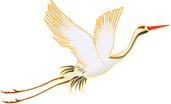 Elegant White Crane! Elegant White Crane! Translator’s Note: This Chinese language article was originally published by the Fuzhou Wushu Association in 2009 (on a Chinese language website based in Zhejiang dedicated to the history, theory and practice of Okinawan Goju Ryu). The content covers events from twenty-years earlier (c. 1989) and seeks to discover who was the Chinese Master who taught Fujian martial arts to the Okinawan traveller - Higaonna Kanryō. Researchers outside of Asia tend to approach this subject from the Anglicised rendering of a Chinese name preserved in Japan - ‘Ryu Ryu Ko’ - which often causes confusion amongst Westerners as it seems very similar to the title of the unconnected ‘Ryu Kyu’ (琉球) Islands – the name of the chain of islands Okinawa happens to be part of. Within Japan and China today, the title ‘Ryu Ryu Ko’ is shortened to ‘Ro Ro Ku’ - as it is a ‘nickname’ the phonetical expression in the English language is only approximate. A number of Chinese researchers are of the opinion that ‘Ryu Ryu Ko’ (如如哥) is a title more likely to have been used in Beijing and is unlikely to have been used in Fuzhou. What is mentioned but not elaborated upon in this article – is the historical reality that ‘Officials’ (that is those individuals who have studied for, sat and passed the Imperial Examinations) were often posted to faraway places where it was their duty to communicate in the ‘Beijing’ dialect (the language of governance throughout China regardless of local dialects). An example of this involves the famous Ch’an Buddhist Master Xu Yun (1840-1959) who was born in the Quanzhou area of Fujian province. His is father was a government ‘Official’ working in Fujian province who was originally from Hunan. Despite living in Fujian province, at home Master Xu Yun’s family spoke the Hunan dialect whilst at work his father spoke the Beijing dialect. Despite being posted together with his family faraway – the connection with the ancestral land was never forgotten or given-up. Marriage partners were chosen from Hunan for Hunanese men and women born in Fujian – and when deaths occurred, the bodies were ceremoniously taken back to Hunan for burial. Therefore, it is not beyond the realms of possibility that Ru Ru Ko was from a family of ‘Officials’ that had originated in Beijing but had been posted to Fujian. This is a realistic example of how ‘Ru Ru Ko’ could have been from a cultural milieu originating in Beijing. As multiple languages are being used (Japanese, Chinese and English), as well as transliteration and phonetical interpretations, it is important that the logical basis of this article is clearly established. Needless to say, research in the Chinese cultural milieu is very different to research carried-out in the English language. For the Chinese language researcher, the investigation begins with the ideograms ‘如如哥’ (pronounced ‘Ru Ru Ge’). This has no obvious linguistic or cultural connection with the Fujian dialect. In Japan these three ideograms are transliterated as ‘儿 - 儿 - コ’ (Ru Ru Ko) - but ‘why’ these ideograms were chosen is something of a mystery as the ideogram ‘儿’ is a simplification of ‘兒’ (er2) which means ‘child’ or ‘son’ (which is used twice). Bear in mind that many Japanese ideograms are either direct borrowings from the Chinese language or modifications. The third ‘Japanese’ ideogram ‘コ ‘ is from the ‘Katakana’ categorisation of symbols – and again refers to a ‘child’ (as in a boy or a girl). This suggests that the Japanese term 儿 - 儿 - コ’ (Ru Ru Ko) quite literally means ‘Child (boy), Child (boy), Child (boy or girl). Therefore, the Japanese term (in Romanji) - of Ru Ru Ko contains no inherent or hidden meaning – and gives no clues as to the identity of the Chinese holder of the name. It appears to be purely phonetical in nature – as if the name were only passed-on by word of mouth and was never written down at the time of being transmitted. Indeed, Higaonna Kanryō admitted that it was difficult to linguistically communicate when he arrived in China. Ru Ru Ko is thought to have been born around 1820 whilst his death date is unknown. Furthermore, whoever he was - his true identity is not known. During the Battle of Okinawa (fought between April 1, 1945 – June 22, 1945) and which cost 110,000 Japanese and Okinawan causalities – as well as around 12,500 US casualties. Okinawa was totally devastated due to the ferocious nature of the fighting. This led to the near total destruction of all paper records (as libraries and private homes were totally destroyed). Many of the best and well-educated martial artists in Okinawa fought in the frontline against the invading American Forces – and were killed – whilst others later died from wounds or committed suicide. The elderly people – if not already evacuated – were killed in the vicious crossfire! It is equally true that large areas of Southern and Eastern China were also devastated during the 1930s and 1940s due to the presence of the Imperial Japanese Army, etc. This physical death and destruction eradicated a vast material and intellectual historical database and is one of the reasons why there are large gaps in details available. The name of the Master in question is often presented using the three Chinese language ideograms of ‘刘良兴’. This can cause further confusion as these three ideograms can be read in the Chinese language as ‘Liu Liangxing’ - giving the impression that this is a legitimate name. This is not the case as the Japanese use of these ideograms is an alternative way of expressing the far more simplistic ‘儿 - 儿 - コ’ (Ru Ru Ko). This is because ‘刘’ (Liu) can be expressed with the hiragana syllable ‘る’ (ru) and the katakana syllable of ‘ル’ (ru). The second ideogram ‘良’ (Liang) can be expressed as ろう (rō) - whilst the third ideogram ‘兴 ‘ (Xing) is represented by ‘こう’ (kō). Technically speaking, this can be read in the Japanese language as ‘Ru Ro Ko’, etc. Therefore, ‘刘良兴’ = ‘儿 - 儿 - コ’ (Ru Ru Ko) is not a specific name in and of itself. Whereas Chinese language users will read the ideograms of ‘刘良兴’ as ‘Liu Liangxing’ - Japanese language readers see only ‘Ru Ru Ko’! Another way of writing the name of this Fujian White Crane Fist Master is ‘Liu Xiangjing’ (刘祥京) - which is considered a genuine name. I cannot find any independent data about this Master on the Chinese language internet – but information possessed by the Fuzhou Wushu Association records this man as being a famous martial arts teacher in the Fuzhou area. Indeed, the entire point of this Fuzhou Wushu Association article is that although considered as a candidate – there is no reliable evidence linking ‘Liu Xiangjing’ (刘祥京) to Okinawan Goju Ryu. Xie Chongxiang (謝崇祥) [1852-1930) was a very famous martial artist from Changle County situated within the Fuzhou area of China. He trained under Master Pan Yu Ba (潘嶼八) who transmitted the ‘Shaolin Arahant Fist’ (少林罗汉拳 - Shao Lin Luo Han Quan) to him (some sources suggest that he also learned the ‘Southern Shaolin White Crane Fist’ [少林白鶴拳 - Shao Lin Bai He Quan] system). Xie Chongxiang was also renowned for developing the ‘Whooping Crane Fist’ (鸣鹤拳 - Ming He Quan) style. There appears to be a connection between Higaonna Kanryō and Xie Chongxiang due to the names that were used by his disciples which are very similar to those found in the Goju Ryu tradition. ACW (31.7.2022) According to the historical records of Fuzhou Wushu Association: A number of representatives of different Okinawan Goju Ryu karate schools (since 1983) - have visited Fuzhou at different times – all seeking historical information. It is the official policy of the Fuzhou Wushu Association to assist these enquiries and help these researchers discover reliable information about the original Chinese ancestor who taught the Okinawan martial artist named ‘Higaonna Kanryō’ [東恩納 寛量 - Dong En Na Kuan Liang] (1853–1915) who trained in China over a fourteen year-period between 1867-1881. It is believed by tradition that Higaonna Kanryō trained in Fuzhou under the Chinese Master named ‘Liu Liangxing’ (刘良兴) - although this is the Japanese transliteration. However, this Chinese Master is also known as ‘儿 - 儿 - コ’ or ‘RU-RU-KO' (Beijing interpretation). We believe that this matter is of great and special significance in the strengthening and consolidating of the traditional friendship between the two sister cities of Fuzhou and Naha - and to continue a good and friendly association between martial artists from Fuzhou and Okinawa. To this end, the Fuzhou Wushu Association takes this mission very seriously, and has actively organized investigative forces, conducted multiple enquiries and has repeatedly opened new lines of enquiry. Due to the length of time between now and the historical period concerned, this research has proven to be very difficult to ascertain and/or confirm. This research has now been ongoing for twenty-years and there is hope that major breakthroughs will eventually occur as new historical documentation becomes apparent. A similar undertaking has been pursued regarding the ‘Uechi Ryu Karate-Do' style of Okinawan martial arts – which identified the Chinese teacher known in Okinawa as ‘Zhou Zihe’ (周子和)! During early March 1988, the President of the Okinawan Goju Ryu Tomarite Association - Tokashiki Yukashiki, (渡嘉敷唯贤 - Du Jia Fu Wei Xian) - acting on inaccurate information provided by the Fujian International Travel Service, believed that the Fuzhou Wushu Association had discovered and confirmed the identity of the Chinese Master who had taught Higaonna Kanryō, and made a false accusation that the Fuzhou Wushu Association was deliberately ‘withholding’ important historical information and that this data should be immediately handed over! This confusion derived from the fact that the Fuzhou Wushu Association was investigating a historical figure named ‘Liu Liangxing’ (刘良兴) - a well-known martial artist who possessed a name very similar sounding to ‘Liu Xiangjing’ (刘祥京) - but it has not been possible to prove a definite or conclusive historical connection. When this reality was explained to Tokashiki Yukashiki – he was of the opinion that we were acting unfriendly – which is untrue. The point is that there is much more investigative work still needed to be carried out. If a definite and verifiable historical connection is discovered – then the Fuzhou Wushu Association will definitely make this information public knowledge. Despite explaining this issue thoroughly, Tokashiki Yukashiki refused to listen and returned to Okinawa where he published a series of articles in the Ryukyu Times (over a ten-day period) between March 9 -18, 1988 – falsely stating that ‘Liu Xiangjing’ (刘祥京) has been identified as the historical figure ‘Liu Liangxing’ (刘良兴) and the teacher of Higaonna Kanryō - by the Fuzhou Wushu Association! At that time, this assertion caused an uproar throughout the Okinawa martial arts community, and the Fuzhou Wushu Association was contacted by a number of concerned historians and martial artists! Okinawan experts agreed with the findings of the Fuzhou Wushu Association and confirmed that there is no obvious historical connection between these two figures – but that ALL avenues of investigation must be carefully pursued and considered. Following this public ridicule, Tokashiki Yukashiki attempted to explain his irresponsible actions by claiming his articles were intended as a ‘joke’! As a way of attempting to settle this matter, the Fujian International Travel Service commissioned ‘Lin Weigong’ (林伟功) - a Cadre of the Fuzhou Local Chronicles Editorial Committee – to investigate this matter whilst liaising with Tokashiki Yukashiki, so as to avoid all further misunderstanding. Lin Weigong – after considering ALL the available historical evidence – eventually produced the article entitled ‘Okinawan Goju Ryu: Examining the Biographical Details of of Higaonna Kanryō and His Chinese Teacher Ru Ru Ko!’ (日本冲绳刚柔流空手道宗师东恩纳宽量之中国师傅儿-儿-コ小考). Tokashiki Yukashiki reviewed this document and declared its content to be a ‘remarkable monument’ for Ru Ru Ko – or ‘Xie Chongxiang’ (谢崇祥) of Fuzhou! Lin Weigong’s ‘Biographical Investigation’ made the following observations: 1) NAME: Recorded as ‘儿 - 儿 - コ’ (Japanese) - RU-RU-KO - and correlates to ‘如如哥’ (Chinese) RU RU GE. His family or clan name was ‘Xie’ (哥) - his first names were ‘Chongxiang’ (崇祥). Indeed. if the master and disciple were of similar ages (or perhaps only one year a part in age) – they could have considered themselves to be ‘brothers’. Therefore, the designation RU RU KO – RU RU GE would be considered correct (in the Beijing dialect) – as the teacher could be a slightly older brother. Xie Chongxiang, however, was from Fuzhou and in the Hokkien dialect he was referred to as ‘Ru Si’ (如司) which would imply a ‘Master’ (师 - Shi). ‘Ru Si’ (如司) translates as ‘Likable Teacher’ in Hokkien. Why is this teacher’s designation recorded in the Beijing dialect – but NOT in the Fuzhou (Hokkien) dialect? Why is the Hokkien variant not known in Okinawa? Fuzhou people tend to use two ideogram descriptions pronounced by a single syllable – but never use three ideogram expressions. Whereas ‘Ru Ko’ and ‘Ru Ge’ are possible in the Hokkien dialect - ‘Ru Ru Ko’ and ‘Ru Ru Ge’ are not used. Recently, a book remembering the old martial arts Master - ‘Yu Baoyan’ (余宝炎) - was published which supports the research of Lin Weigong. This book was written by Yu Baoyan’s son – named ‘Yu Mou’ (余某) - and is entitled ‘Remembering My Father Yu Baoyan’ (忆父亲余宝炎). Within this research, the author has discovered at least five places in the historical records where Xie Chongxiang is referred to by the Hokkien designation ‘Ru Shi’ (如师)! The Editor-in-Chief of the book is one ‘Xie Qiquan’ (谢其铨). In the chapter entitled ‘Whooping Crane Fist of Lineage Master Xie Ru Ru’ (鸣鹤拳宗师谢如如) - Xie Qiquan quotes two lines of poetry preserved within the Fuzhou (Hokkien) dialect which reads ‘If Ru Si raises just the tip of a single arrow – then even the Immortals and the Gods cannot compete with him!’ and ‘When Ru Si gently lifts, presses and separates – the Immortals and the Gods cannot stop him!’ (“ 如司单基举箭,神仙也难战”,“如司柔搅劈,神仙挡不住”。) It can be clearly seen from this information that Xie Chongxiang (谢崇祥) is his original name, and ‘Ru Si’ (如司) is his nickname. This is why the native people of Fuzhou refer to this individual as ‘Ru Si (Shi)’ - 如司 (师)- or ‘Likable Teacher - (Master)’! The research carried out by Lin Weigong demonstrates that the terms ‘Ru Ru Si’ (如如司) and ‘Ru Ru Ge’ (如如哥) - transliterated into the Japanese language as ‘Ru Ru Ko’ - are in fact arbitrary naming errors (怪名 - Guai Ming) probably made during the copying process from one language into another. This led to a single ideogram being mistakenly copied ‘twice’ - and this error being made into a convention (preserved during the transmission of Goju Ryu to the West). Furthermore, the ideograms ‘如如’ (Ru Ru) are also pronounced in the Beijing dialect as ‘Ru Ru’! According to the Introduction provided by the two experts Director Xie Bizhen (谢必震) and Professor Xu Gongsheng (徐恭生) of the ‘Research Office of the History of Sino-Ryukyu Relations’ - located within Fujian Normal University – it is stated that at the time most people in Fuzhou could not speak the Beijing dialect (the so-called ‘Mandarin’), and only ‘scholars’ had to learn the Beijing dialect if they wanted to take part in the Beijing imperial examinations. This implies that it is unlikely that a martial arts Master – or his disciple – would communicate to each other in Fuzhou using the Beijing dialect. 2) DESCRIPTION OF BODY-TYPE: The available data in Fuzhou suggests that Xie Chongxiang (谢崇祥) also known as ‘Ru Ru’ (如如) - was short (1.55 meters) and stout in stature. He was small and inconspicuous. He chose not to stand-out in a crowd. According to a number of Japanese language sources (preserved within the various Goju Ryu schools), however, ‘Liu Liangxing’ (刘良兴) is said to have been 6 foot in height (1.80 meters) and was generally considered tall and burly and to stand-out in a crowd – a physical description which is the exact opposite of that pertaining to ‘Xie Chongxiang’ (谢崇祥) - also known as ‘Ru Si’ (如司)! 3) OCCUPATION – PROFESSION: Xie Chongxiang (谢崇祥) also known as ‘Ru Ru’ (如如) - was taught the skill of ‘Shoe-Making’ by his father at the ‘Bao Mei Zhai’ (宝美斋) Shoe Shop in Fuzhou. At the age of 31 he was considered a shoemaker in his own right, and he established a School for Shoe-Making Apprentices at a local Temple (庙 - Miao) situated on Shanghang (上杭) Street. According to the information provided by the International Okinawa Goju Ryu Karate Federation: Higaonna Kanryō recalled that Master RU-RU-KO (Liu Liangxing - 刘良兴) was originally born as a nobleman. In the second half of the 19th century, Chinese society was in turmoil, and the ‘Liu Liangxing’ (刘良兴) and his family kept their origin and status secret. Indeed, he took a job making tiles and operating a kiln. He eventually rented a two-storey house by the river in the suburbs (living by himself), making a living as a blacksmith. Lin Weigong has seen this description confirmed in a biographical text entitled ‘Ox-Head’ (牛头 - Niu Tou) - but it differs from the description found in the biographical text entitled ‘Horses-Mouth’ (马嘴 - Ma Zui). 4) AGE: Xie Chongxiang [谢崇祥] (Ru Si - 如司) was born in 1852, while RU-RU-KO (Liu Liangxing - 刘良兴) was born in 1853. Given that Higaonna Kanryō was also born in 1853 – then the age difference between master and disciple would be either no years or only one year! This seems an unreasonable assumption as ‘Higaonna Morio’ (东恩纳盛男) - whilst passing-on details preserved by the third generation Goju Ryu Master Miyagi Anichi (宫城安一) - states that the age difference between master and disciple was at least twenty-five years! Indeed, due to the advanced years of his teacher - Higaonna Kanryō - was advised to return home. 5) MARTIAL ART NAME: The available biographies state that the martial art in question is named ‘鸣鹤拳’ (Ming He Quan). This can be translated as: a) 鸣 - (ming2) = A cry issued forth by a bird, insect or other animal. b) 鹤 - (he4) = Specifically a ‘White’ bird defined as a ‘Crane’. c) 拳 - (quan2) = A hand which is ‘closed’ - specifically a ‘clenched’ fist. 6) MARTIAL ART THEORY: This Chinese martial arts style has the ‘Three Battles’ (三战 - San Zhan) technique as its foundational ancestor. This agrees with the records as preserved in Japan where this technique is referred to as ‘Sanchin’. In fact, within the Fuzhou area of China, the ‘Three Battles’ (三战 - San Zhan) technique is the foundation of many if not all ‘Southern Fist’ (南拳 - Nan Quan) martial styles – including ‘Dragon’ (龙 - Long), ‘Crane’ (鹤 - He), ‘Tiger’ (虎 - Hu), ‘Lion’ (狮 - Shi) ‘Arahant’ (罗汉 - Luo Han) and ‘Ground Technique’ (地术 - De Shu), etc. Therefore, the ‘Three Battles’ (三战 - San Zhan) technique is not unique to ‘Whooping Crane Fist’ (鸣鹤拳 - Ming He Quan). The available biographies record that the ‘Song of Bright Reason’ (明理歌 - Ming Li Ge) states that ‘Whooping Crane Fist’ is defined by a rapid interchange of ‘hard’ and ‘soft’ (刚柔相济 - Gang Rou Xiang Ji) martial techniques – and that this is the defining characteristic of this style. As this style spread to Okinawa whilst retaining its reliance upon rigidity and giving-way – it became known in the Japanese language as the ‘Hard-Soft’ (Goju) Karate style. Higaonna Morio states that Miyagi Chojun (宫城长顺) - who was a disciple of Higaonna Kanryō - remembered that his teacher (Higaonna Kanryō) brought a martial manual back from China entitled the ‘Martial Preparation Record’ (武备志 - Wu Bei Zhi). One line reads ‘法刚柔吞吐’ (Fa Gang Rou Tun Tu)’ which translates as the ‘law of hard and soft operates throughout’. This was taken to mean that the main martial principle in operation is that of the continuous interchange of ‘hard-soft’ (刚柔 - Gang Rou). This is exactly how the style of Goju Ryu Karate-Do was named by Miyagi Chojun – after he read the specific line mentioned above as contained in the martial manual brought back from China by his teacher - Higaonna Kanryō! This is why the Goju Ryu style of Karate emphasises the rapid interchange of hard and soft martial techniques. Points that need clarifying. Combining rigidity with softness is the general rule for ALL styles of ‘Southern Fist’ (南拳 - Nan Quan) originating within the Fuzhou area. This is not a martial principle unique to ‘Whooping Crane Fist’ (鸣鹤拳 - Ming He Quan). Therefore, naming this style after this principle is far too general and conveys nothing of the original style when considering how many styles that have been developed throughout the Fuzhou area. Knowing the guiding (and underlying) operating principle tells historians nothing about the name (or origin) of the martial art style concerned. In theory it could be related to any of the Fuzhou martial arts styles listed above. This suggests that the compiler of the traditional biographies surrounding the history of the transmission of Goju Ryu from Fuzhou to Okinawa did not possess a good or sound general knowledge of the martial art styles operating in and around the Fuzhou area – and this is something of a mystery. This suggests that a crucial element of historical (cultural) data is missing from the biographies surrounding the transmission of a Chinese style of Fujian martial arts to Okinawa! 7) DISCIPLES: The biographies state that students of this martial arts style must show a good and virtuous character whilst also achieving an advanced martial ability! The student is tested both morally and physically when entering this martial arts style! Both mind and body are developed equally! If the biography of Higaonna Kanryō is correct - then his Master was named ‘Xie Chongxiang’ (谢崇祥) and he was called ‘Ru Ru Ko’ - or ‘Ru Ru’ (如如)! It must also be acknowledged that training in this way and following these martial principles are commonplace within the Fuzhou area. Therefore, Higaonna Kanryō could have trained with any number of teachers all behaving very similarly and demanding equally high standards of commitment and endeavour! Fuzhou has very high martial standards and what Higaonna Kanryō describes could relate to any number of martial arts masters living in the area. The area is renowned for its severe and highly demanding martial arts standards! Due to the missing historical and cultural data it is correct to say that the available biographies regarding the experiences of Higaonna Kanryō in China are incomplete. Why is this? Has data been taken out? Has data gone missing? Did the compilers lack a basic cultural understanding of the martial culture operating in and around Fuzhou? With this kind of crucial data missing, it is very difficult to get to the root of the matter. On April 20, 1989, the above research by Lin Weigong was made public in the ‘Fuzhou Evening News’. Some months later, on October 19th and November 1st, 2022, two readers separately raised the questions ‘Who was the Chinese Master of the Japanese Higaonna Kanryō?’ and ‘Is Japan’s Goju Ryu Karate and China’s Whooping Crane Fist Directly Related?’ This is because Lin Weigong’s article caused so many doubts (and triggered in-depth debate) that it was printed twice six months apart! This piece was entitled ‘Discussion with Comrade Lin Weigong’ (与林伟功同志商榷) - and because of all the doubts and missing historical and cultural detail it was decided that it is too early to build a monument to ‘Xie Chongxiang’ (谢崇祥) in Fuzhou. More evidence needs to be ascertained before such an undertaking can be formally considered. During August 1989, when Xu Cai (徐才) - the Chairman of the Chinese Wushu Association was informed about this matter – he stated that in accordance with the spirit of seeking truth from facts, a scientific attitude should be adopted, and this issue should not be forced. On the basis of sound historical research and expert appraisal, a scientific basis must be established. Either there is a ‘fact’ or there is ‘no fact’ - there cannot be any grey areas! For this reason, we believe that textual research on historical figures should be treated with a serious and exact attitude so that truth can be extracted from facts. The establishment of historical fact cannot be arbitrarily shaped. If it is correct that Higaonna Kanryō was taught by a Chinese Master named ‘Xie Chongxiang’ (谢崇祥) - who was called ‘Ru Ru Ko’ - then this must be proven beyond any reasonable doubt. Doubt must be removed through good quality research and the establishment of historical fact. In China we possess a responsibility to our own martial history in Fuzhou – and we also possess a responsibility for all the Karate-styles in Okinawa (and Japan) whose practitioners believe their martial systems originate in China! Remember, many Okinawan and Japanese martial styles have spread worldwide – as have many Chinese martial systems! Establishing a correct history is not a laughing matter and is a very serious affair. If false claims are made, then this issue becomes a laughing matter not only in Fuzhou – but also throughout the martial arts schools of Okinawa! December 23, 2009 Chinese Language Article:
https://web-archive-org.translate.goog/web/20131009224220/http://gojuryukarate.cn/showart.asp?art_id=33&_x_tr_sl=zh-TW&_x_tr_tl=en&_x_tr_hl=en&_x_tr_pto=sc 福州武术协会寻查RU-RU-KO过程与看法 据福州武协历史资料记载:冲绳刚柔流空手道各派,自1983年开始,直到现在都先后陆续来到福州,希望福州武协能够协助他们寻查其原祖东恩纳宽量在1867年—1881年间,在福州学武时的师傅刘良兴(日语译音),冲绳武术界称他为“ 儿 - 儿 - コ(日文) RU-RU-KO (北京音)”。我们认为,此事对加强与巩固福州、那霸两个友好城市的传统友谊、对福州武术也有着重大而特殊的意义。为此,福州武协十分认真,并积极地组织力量,多方调查,反复论证。由于时间太久,缺乏历史资料,虽查有数人,均似是而非,难予最后确认。20多年来,不间断地在继续调查中。冲绳上地流空手道也有类似之事,对周子和的寻查圆满成功。 1988年3月初,冲绳刚柔流泊手会会长渡嘉敷唯贤,根据福建省国际旅行社提供的不准确的信息,认为福州武协已找到冲绳刚柔流的师祖,要求我们把调查材料交给他们,当时我们虽然正在调查一个姓名、住处与“刘良兴”近似的已故老拳师“刘祥京”。但缺乏更多的事实可作论证。当我们把调查过程告诉渡嘉敷唯贤,并一再说明,这尚无有力、确凿的证据,还要做大量的考证工作。但他却认为我们对他不友好,不给他们真实材料。虽经我们再三说明、解析,而他回冲绳后,即于1988年3月9日—18日在《琉球时报》连载10天,说东恩纳宽量在福州的师父即“刘祥京”已调查证实。当时给冲绳武术界引起了轩然大波,纷纷向福州武协提出质疑。他们从多方面证明,均认为《琉球时报》报导不实。随后,渡嘉敷唯贤在冲绳也否认了他的报导事实,闹了一场笑话。接着渡嘉敷唯贤又经国际旅行社介绍,委托福州市地方志编委会的干部林伟功调查。随后林伟功写了一篇《日本冲绳刚柔流空手道宗师东恩纳宽量之中国师傅儿-儿-コ小考》一文,交给渡嘉敷唯贤,渡嘉敷唯贤据此为儿-儿-コ(谢崇祥)在福州立了“显彰碑”。 林伟功所谓的《小考》,其论据如下: 一、 姓名:《小考》说, 儿 - 儿 - コ(日文) RU-RU-KO (北京音)的真名应是 “ 如如 ” (北京音),他姓谢,族字崇祥,北京音 “RU-RU-KO 即如如哥 ” 。因师徒只相差一岁,所以用兄弟相称,叫 “RU-RU-KO 如如哥 ” 。从名字上 “ 考证 ” , RU-RU-KO 即 “ 如如哥 ” 无误。 可是谢崇祥,福州社会上普遍是福州话叫“如司(师)”,在福州武术界无人不知的事实,但却没有人知道有福州话的“如如司”者。而福州人的习惯,凡双字同音者只称单字,如:“如哥”、“如司”等,从没人称“如如哥”、“如如司”。最近老拳师《余宝炎》一书出版。该书是宣扬林伟功观点的。余宝炎儿子余某,在书中写一篇《忆父亲余宝炎》一文中,却有五处称谢崇祥为 “ 如师 ”。该书主编谢其铨在《鸣鹤拳宗师谢如如》一文中,引用了福州话顺口溜“ 如司单基举箭,神仙也难战”,“如司柔搅劈,神仙挡不住”。由此可见,谢崇祥是他的原名,“如司”是他的别称。所以福州人都称他为“ 如司(师)”,而“如如司”或“如如哥”只是林伟功偷梁换柱,任意塑造的“怪名”。况且“ 如如”二字是以 北京音才能与 RU-RU相近。据福建师范大学“中琉关系史研究室”谢必震主任和徐恭生教授介绍,二位专家说,当时福州一般人都不会说北京话(即所谓“官话”),只有“秀才”,要上京考试要学北京话。所以,学武的师徒之间,更不可能用北京话相称。 二、 体型:《小考》说, 谢崇祥(如如)身材矮小( 1.55 米左右)粗壮,外表看个小很不起眼。据日本各派提供资料:RU-RU-KO(刘良兴)身高6尺(1.80米左右),身材高大魁梧,这与谢崇祥(如司)的体型完全相反。 三、 职业:《小考》说, 谢崇祥(如如)其父让他在宝美斋鞋铺学做鞋艺, 31 岁时在福州上杭街直冲庙设馆授徒。据国际冲绳刚柔流空手道连盟提供的资料:东恩纳宽量回忆师父RU-RU-KO(刘良兴),原是出生于贵族。19世纪后半叶,中国社会动荡不安,“刘良兴”一家都隐姓潜伏,蓄发藏身于瓦窑,为普通瓦工,平时烧瓦、叠瓦。后辞去瓦窑工作,独自租住郊外河边的两层高的房子,以篾匠维持生计。这与《小考》所提的职业,“牛头”对不了“马嘴”。 四、 年龄:谢崇祥(如司)出生于 1852 年,而 RU-RU-KO (刘良兴)出生于 1853 年,师徒仅相差一岁。这与一般情理不合。据东恩纳盛男提供资料,其第三代传人,宫城安一说,师徒间大约相差25岁左右。因师父年老,所以令东恩纳宽量回琉球。 五、拳论、拳名:《小考》说: 根据 “ 拳论 ” (鸣鹤拳): “ 本法以三战为祖 ” ,这与日方视以 “ 三战 ” 为根本是相通的。实际上福州传统南拳,如:龙、鹤、虎、狮、罗汉、地术等拳术都是以“三战”为基础,不是鸣鹤拳独有的。《小考》又说: 《明理歌》鸣鹤拳中就有 “ 刚柔相济 ” 的提法,而此拳就是以刚柔为根本的,故拳名为 “ 刚柔流空手道 ” 。 在东恩纳盛男提供的资料中说:刚柔流空手道是东恩纳宽量的学生宫城长顺,从福州带回的中国武术书刊《武备志》中所提的“法刚柔吞吐”一语中,取“刚柔”二字,作为该流派的名称,故名“刚柔流”空手道。“刚柔相济”是福州一般南拳拳术的普遍风格,也更不是鸣鹤拳所专有。所谓的“刚柔相济”与刚柔流拳名,毫不相干,风马牛不相及,由这二点所谓的《小考》,可知 《小考》笔者毫无福州传统南拳的一般常识, 任意推测、 “ 考证 ”,太过无知可笑。 七、 授徒:《小考》说: 双方授课时,对徒弟要求极严,品德要求高,极重武德。这些双方都不谋而合,这与源流有关,如如均是这样要求,考验徒弟的。 《小考》以此证明RU-RU-KO就是谢崇祥(如如)。那么,福州市的绝大部份的老拳师对学徒都极严格,极重武德,也就都可称为RU-RU-KO,岂不是也都可成为东恩纳宽量的师父了吗?综上所述,所谓的《小考》,并无一点可以站得住脚, 毫无 “ 考证 ” 价值,对历史人物的考证,不严肃认真、任意推测塑造,草率行事。 当1989年4月20日,上述《小考》的内容在《福州晚报》公开宣扬后,10月19日与11月1日即有二名读者分别以《日本东恩纳宽量的师父到底是谁?》及《日本刚柔流空手道与福州鸣鹤拳同宗吗?》,两次出现《与林伟功同志商榷》的文章,认为疑点太多,太过草率,影响不好,反对在福州市为谢崇祥立“显彰碑”。 1989年8月中国武协主席徐才知道后,认为按照实事求是的精神,理应采取科学的态度,不可迁强附会。在历史考证、专家鉴定基础上,提出科学的依据。有或无、是或非,有则有之,无则无之, 千万不要似是而非。为此,我们认为考证历史人物要以实事求是的精神,认真、严肃的态度对待。不能草率、任意塑造。所谓“谢崇祥就是RU-RU-KO,也就是东恩纳宽量在福州学武时的师父,就是刚柔流空手道的始祖”,并为他树立了所谓的“显彰碑”,这不仅在福州市武术界中,而且在冲绳各派空手道中,都成了天大的笑话。 2009年12月23日 |
AuthorShifu Adrian Chan-Wyles (b. 1967) - Lineage (Generational) Inheritor of the Ch'an Dao Hakka Gongfu System. |
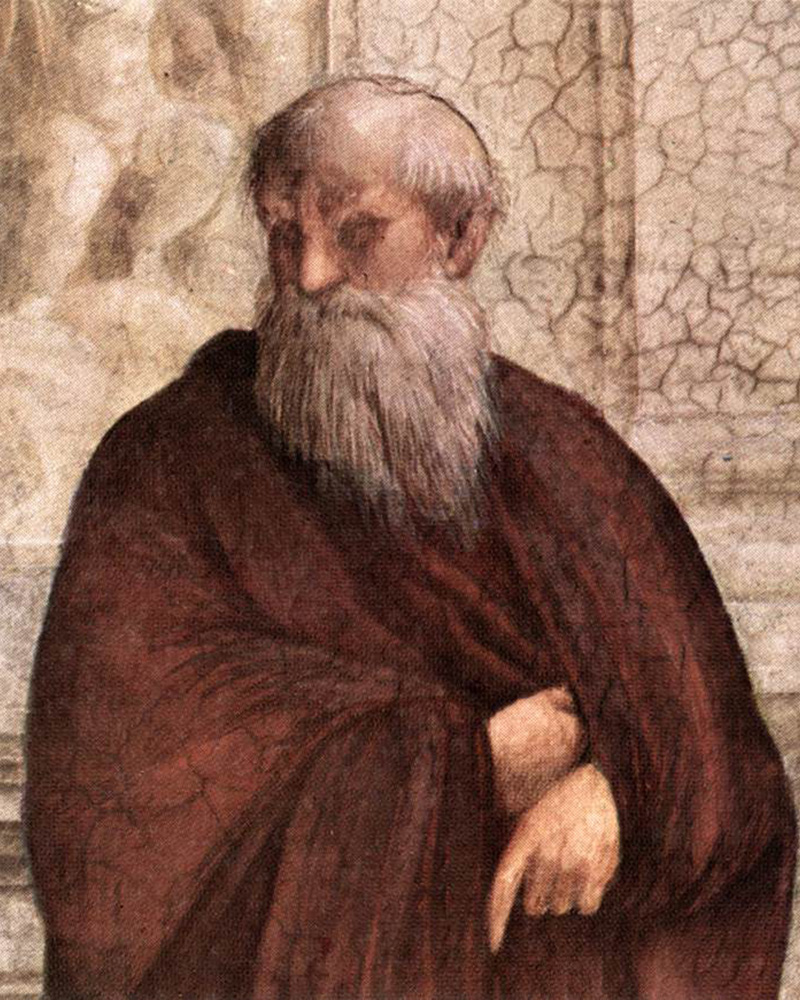
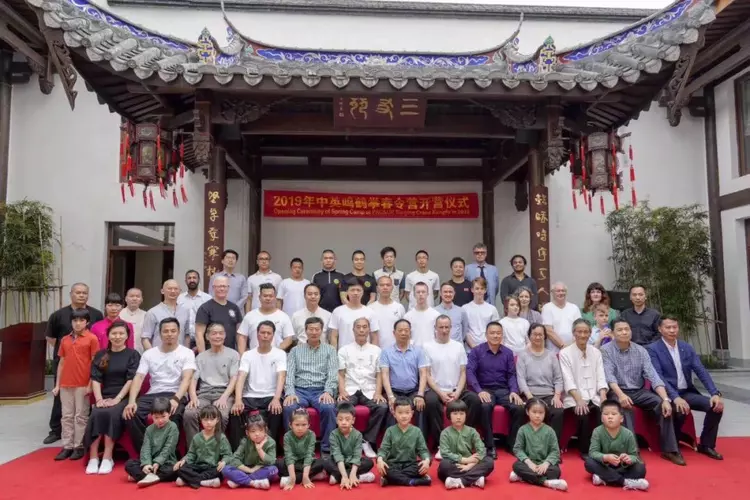
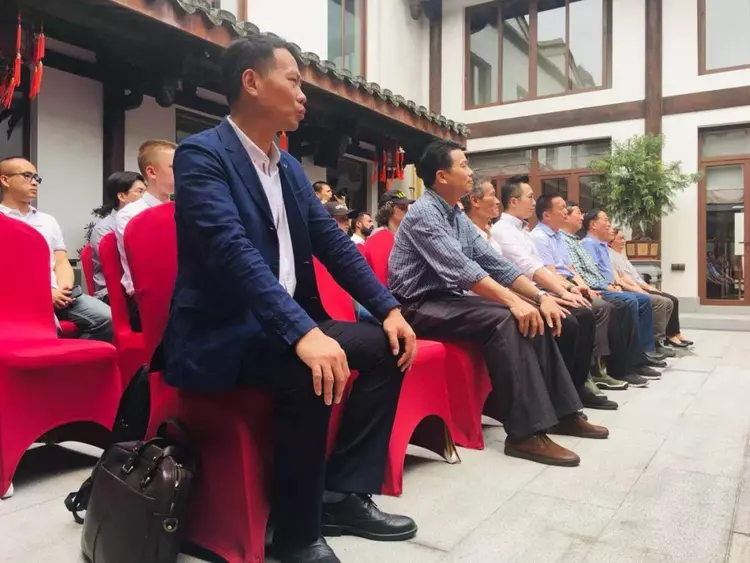
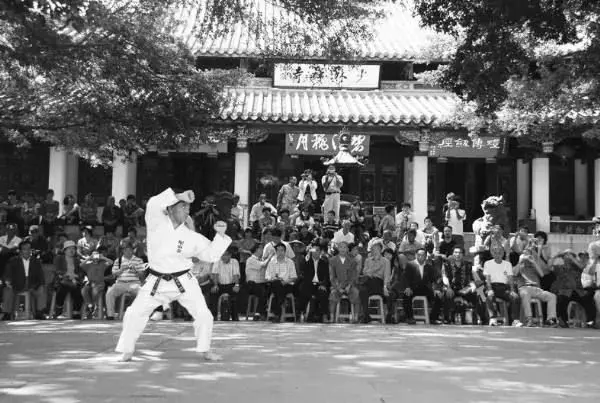
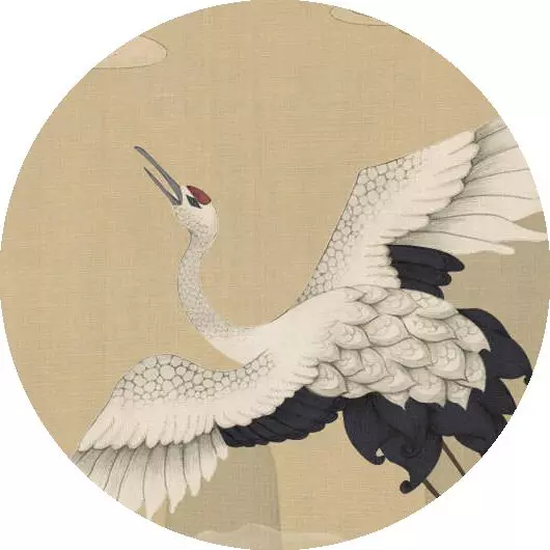
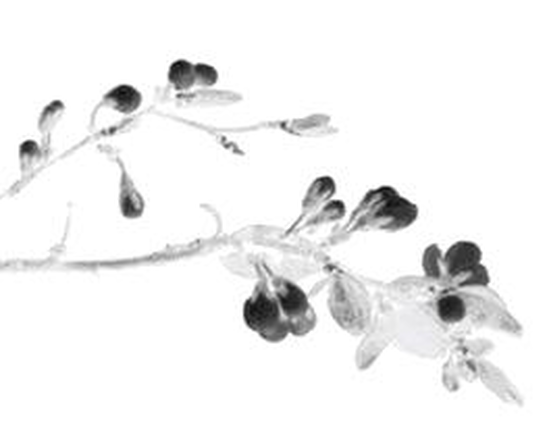
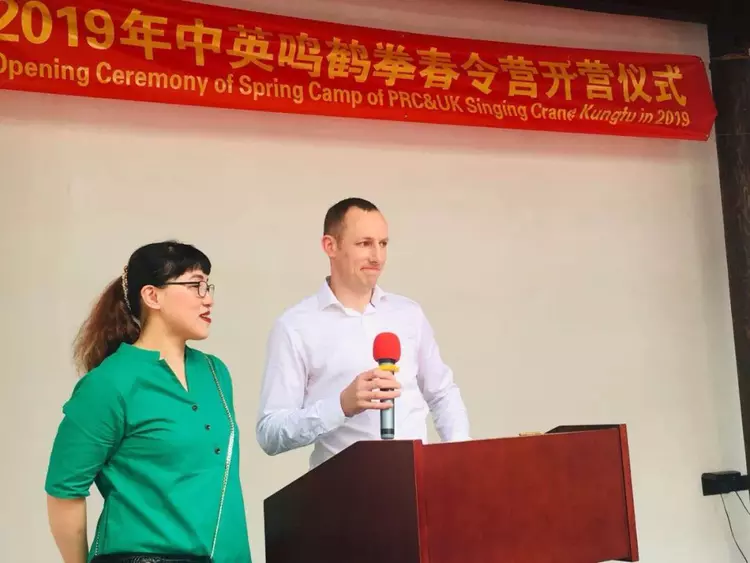
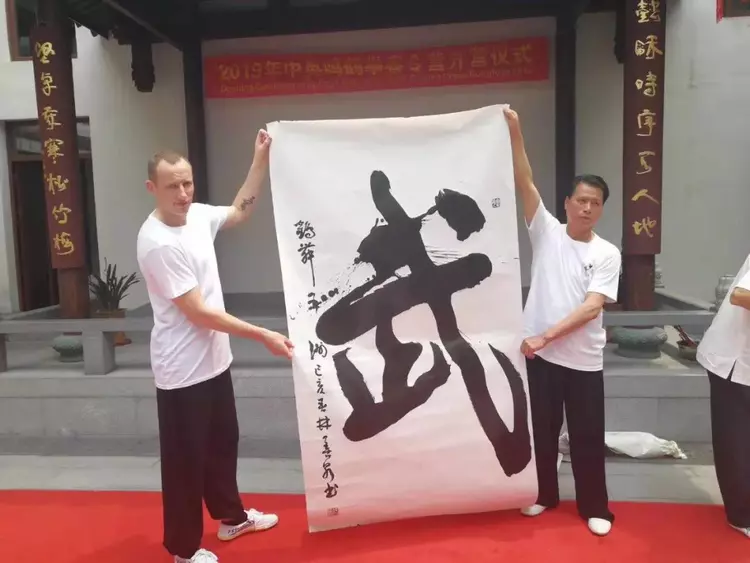
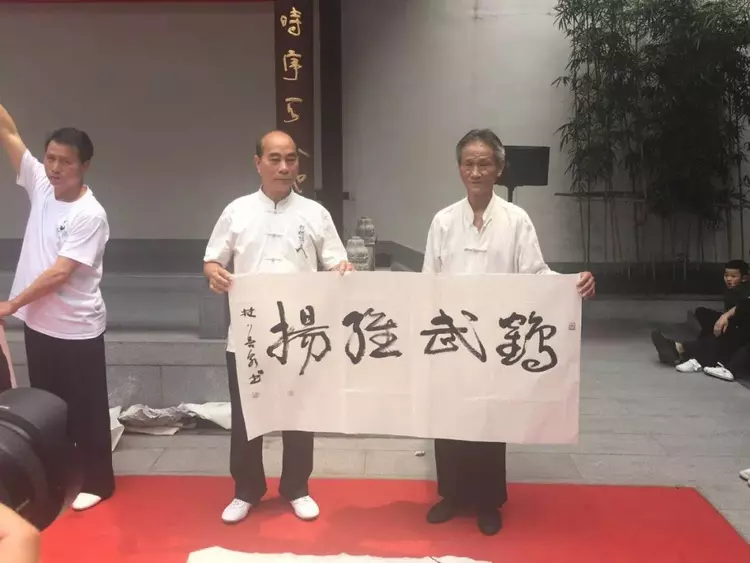
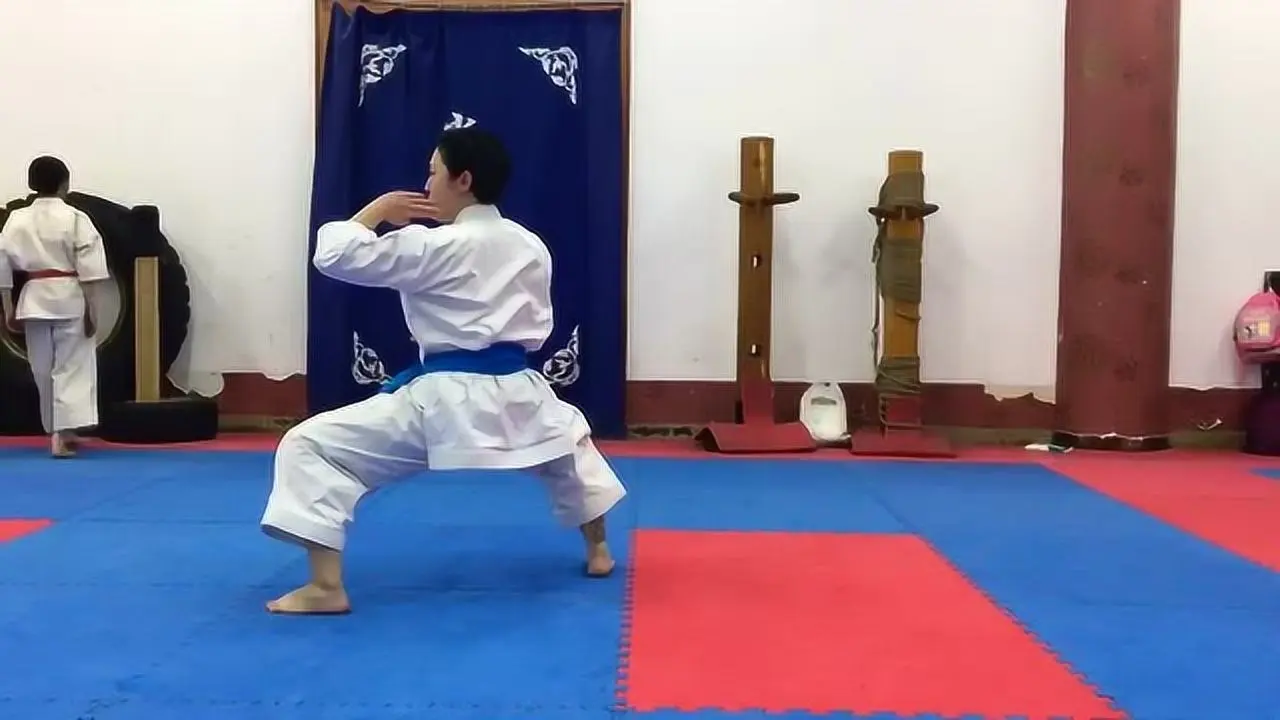
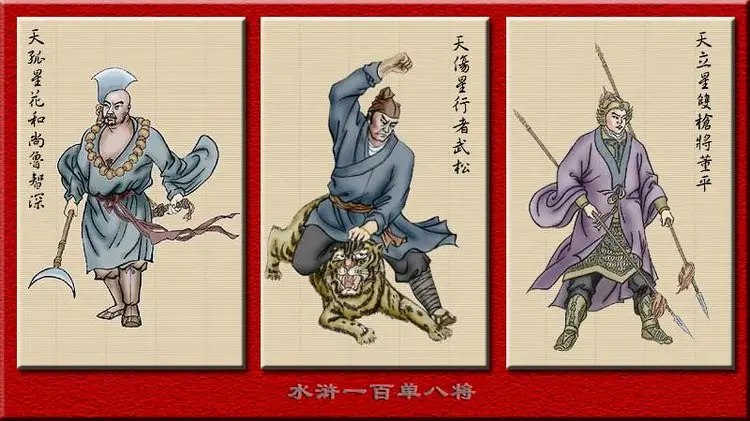
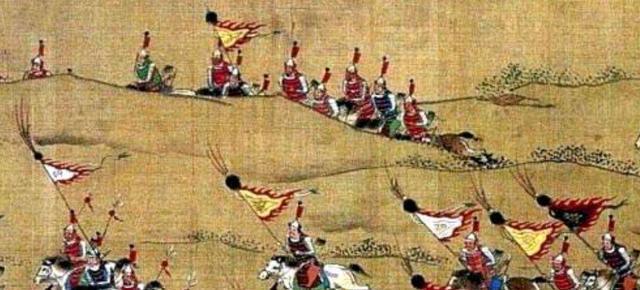
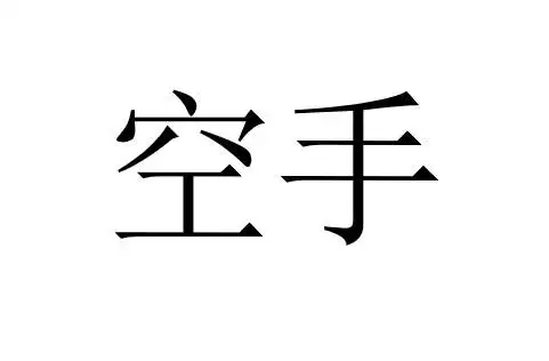
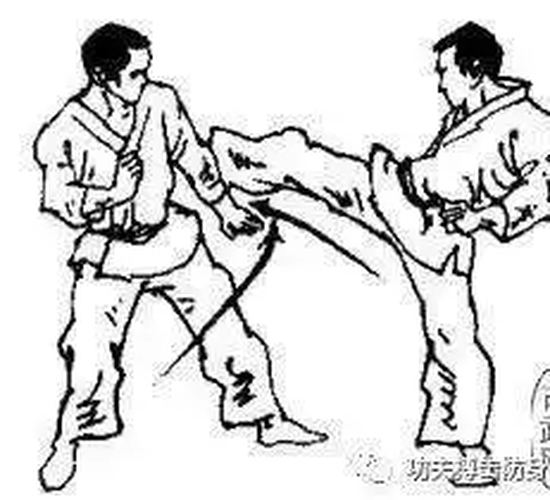
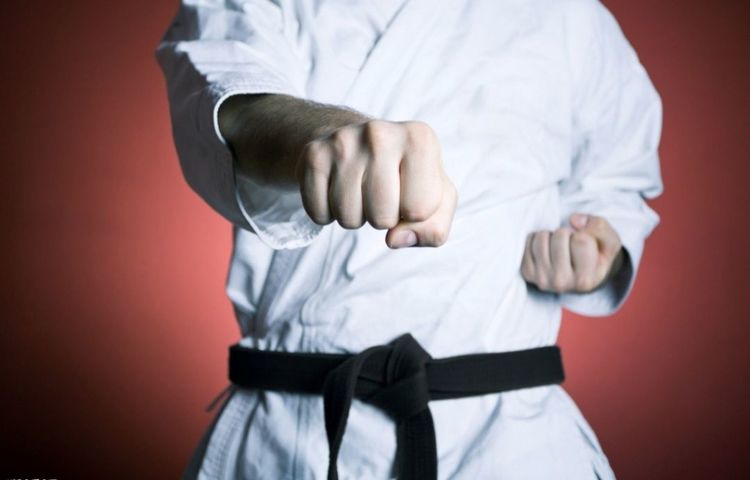
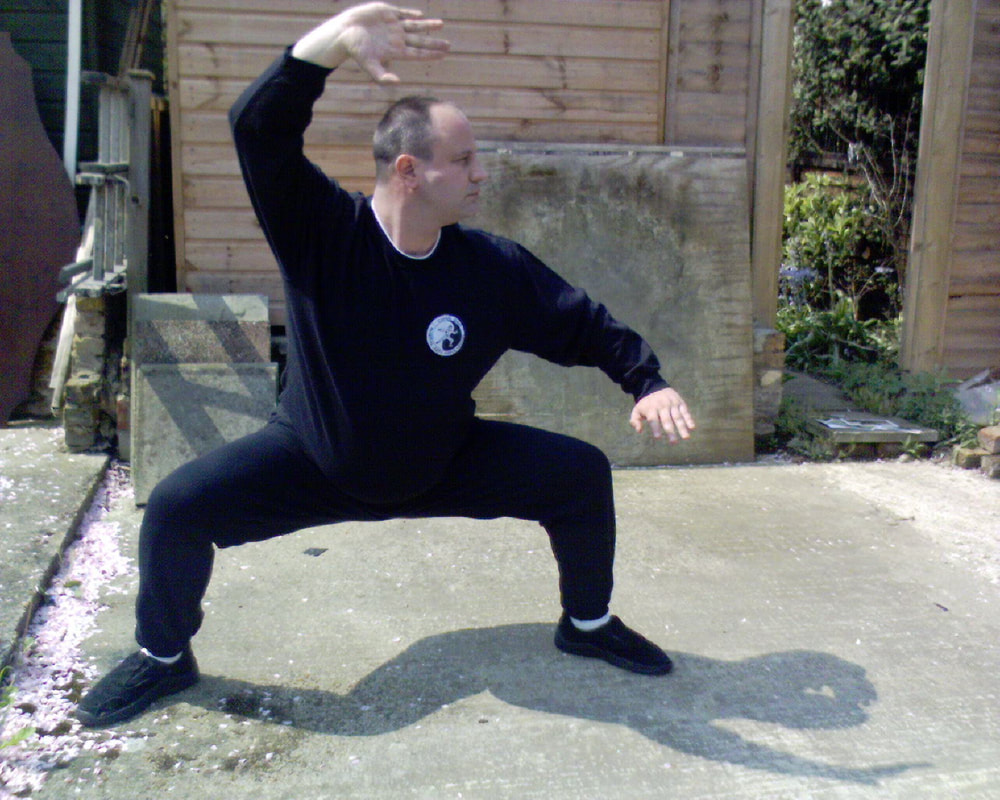
 RSS Feed
RSS Feed